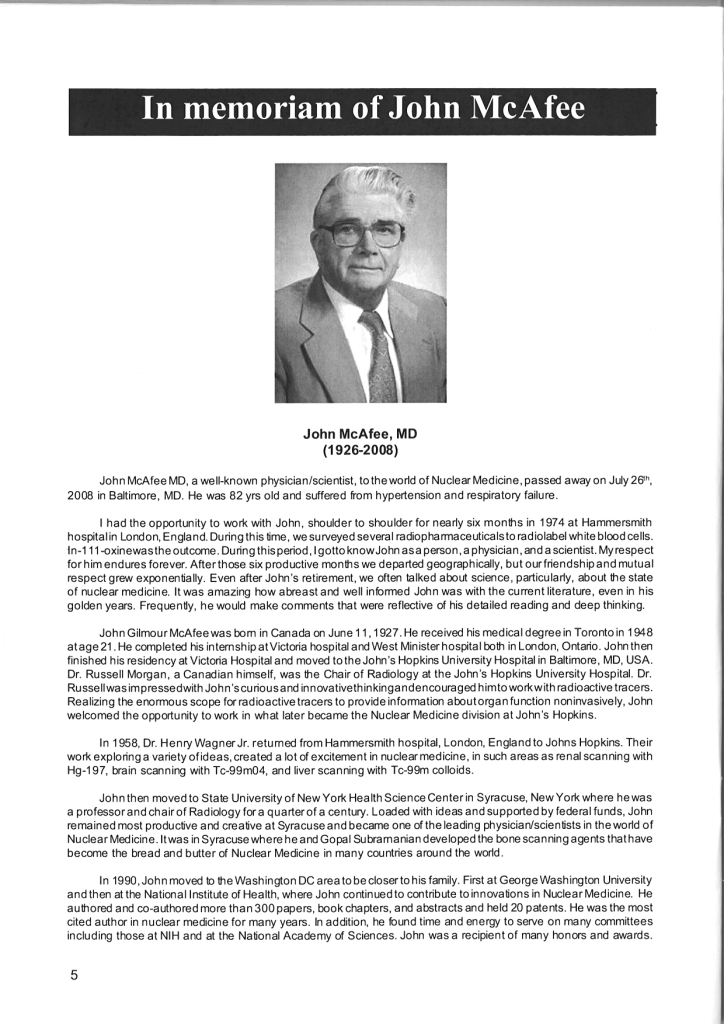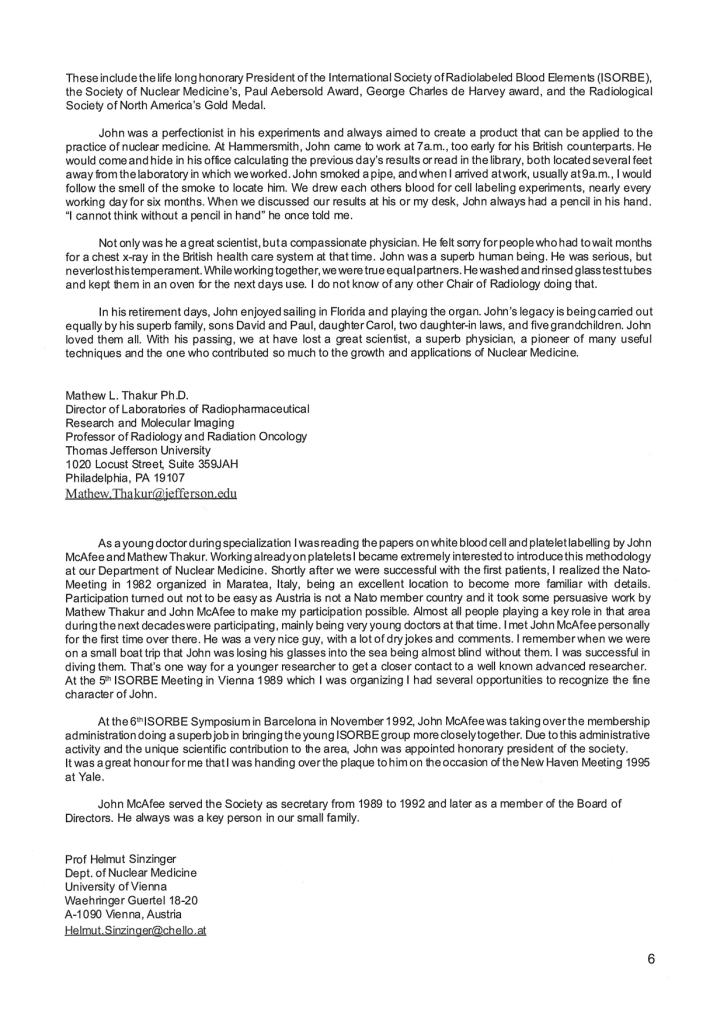History
7th ISORBE Congress IZMIR 2015
The newest ISORBE presidium
(left to right : Dr. Bhonsle, Prof. Sinzinger – behind, Prof. Martin-Comin – in front, Prof. Soroa,
Prof. Sathekge, Dr. Brammen, Prof. Thakur (honorary member), Prof. Özker
– Prof. Palestro was not able to attend the conference)
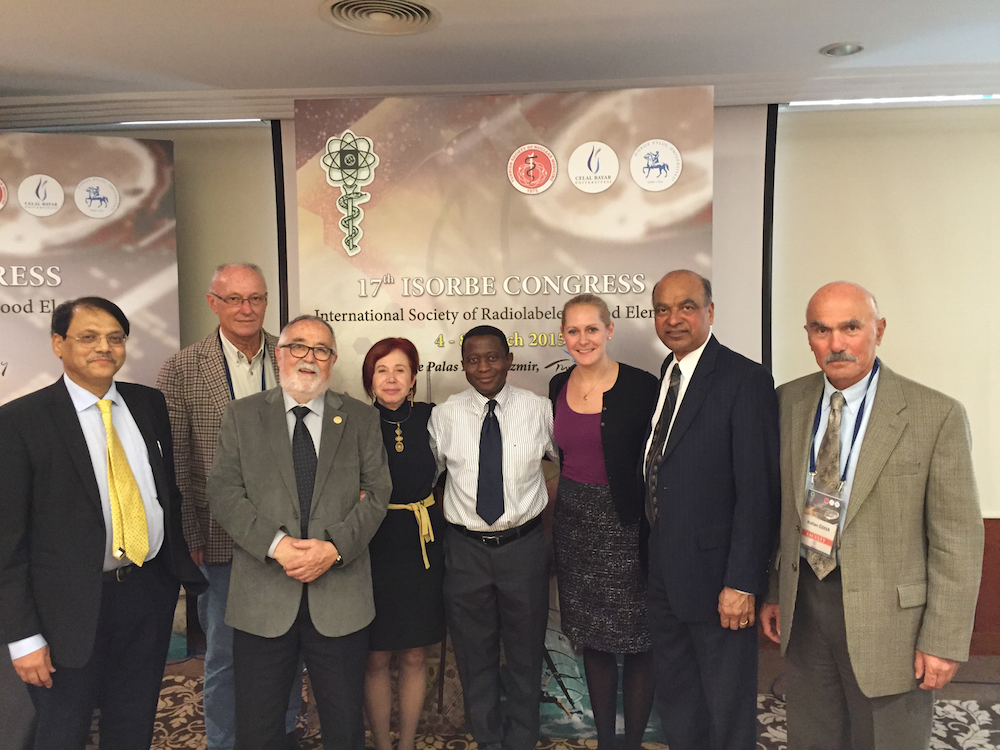
The 17th biennial ISORBE meeting took place in Izmir, Turkey from March 4-8, 2015. It was held in the Ege Palas Hotel, chaired by Prof. Elvan Sayit Bilgin. Izmir is the third most populous city in Turkey lying on the Mediterranean Sea. It is one of the oldest settlements on the Mediterranean basin with over 4,000 years of recorded history. Therefore, the mix of old and new made it a wonderful location to hold a conference and share novel ideas, as well as discuss longstanding knowledge in the field of blood cell labeling.
This year’s conference was overall a big success for all presenters, as well as attendees. A wide range of topics were presented, including various imaging methods for prosthetic joint, bone, and musculoskeletal infections, inflammatory bowel disease, stem cell therapy, imaging of atherosclerosis, the role of PET-CT in HIV and Tuberculosis, as well as the role of additional tracers, such as Tc 99m ciprofloxacin, Tc 99m- UBI and Zr 89 in cell labeling. A new consensus for the minimum requirements of a blood labeling facility were discussed with the experts and will be published in the near future. This conference also strengthened the important relationship between IAEA and ISORBE. The future role of IAEA and ISORBE in teaching scientists was highlighted, with the outcome being that an online course in radiopharmacy will be offered and financed by the IAEA. More information on this course will be published on the ISORBE website as soon as more details become available.
The congress was well organized and not only were all lectures and poster presentations of very good quality, the social program left us all with something to remember! It was a great platform for young doctors and scientists to interact with and share knowledge with the leading experts in blood cell labeling from a range of different countries.
The ISORBE Presidium would like to congratulate Mike Sathekge on his unanimous re-election as ISORBE president. New to the presidium were voted: Uday Bhonsle, Omer Aras and Lindsay Brammen (ISORBE secretary). We cannot thank Professor Sayit Bilgin and the local organizing committee enough for a wonderful job in organizing an excellent scientific program and kind hospitality. Below are some images of the conference, we hope you enjoy them!
Prof Mike Sathekge Dr Lindsay Brammen
ISORBE President ISORBE secretary
Kutlan Ozker being recognized for his previous work as ISORBE president
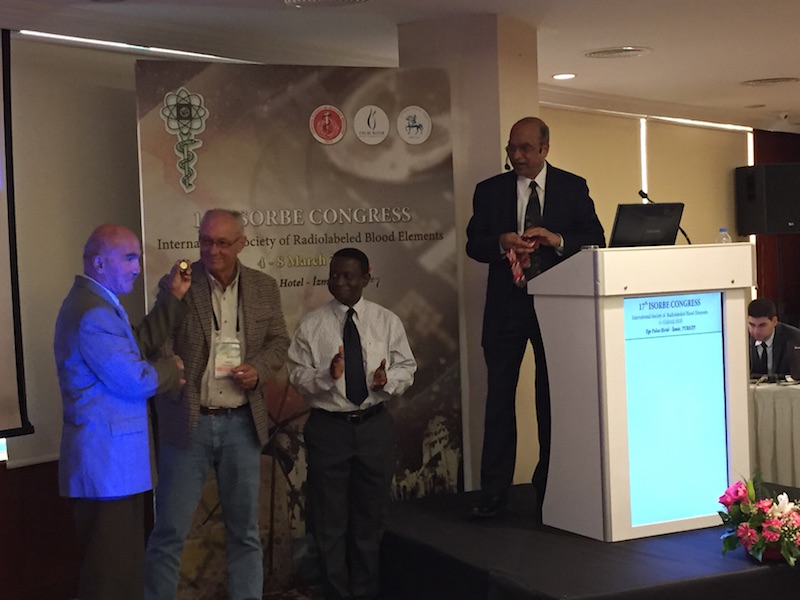
Jose Martin-Comin receiving his award for past presidency
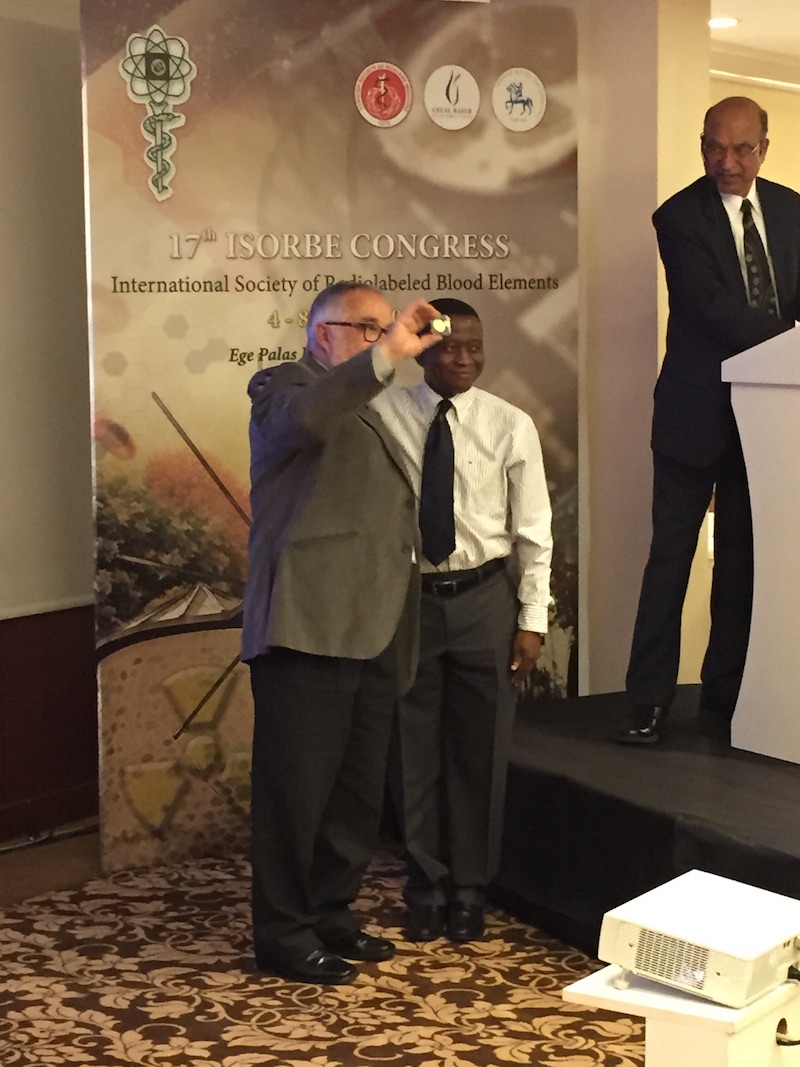

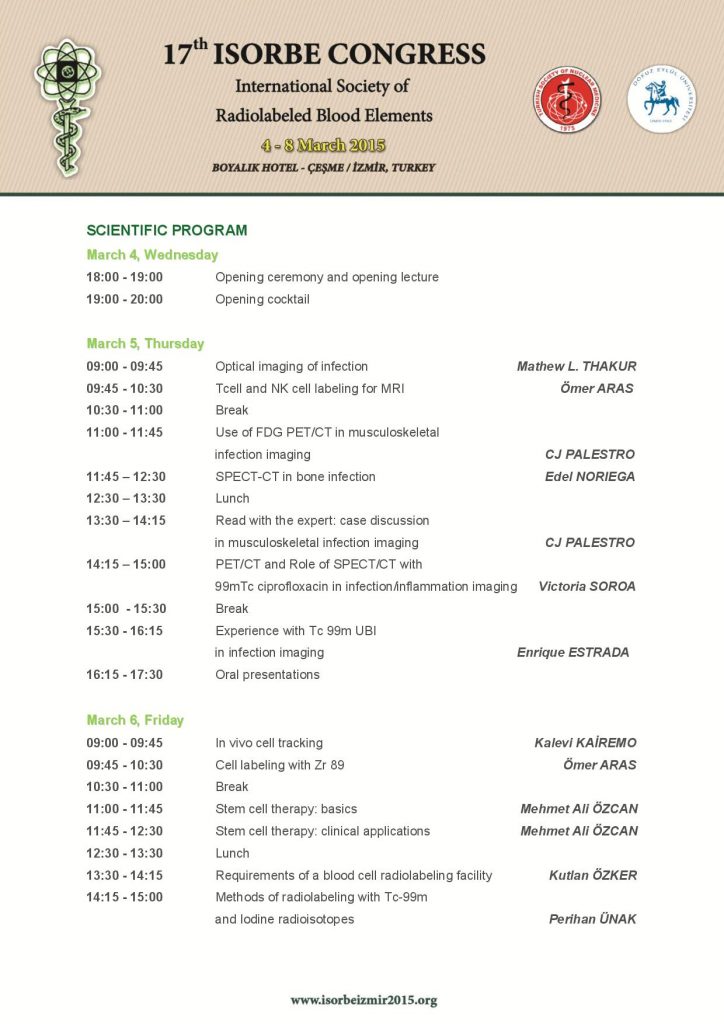
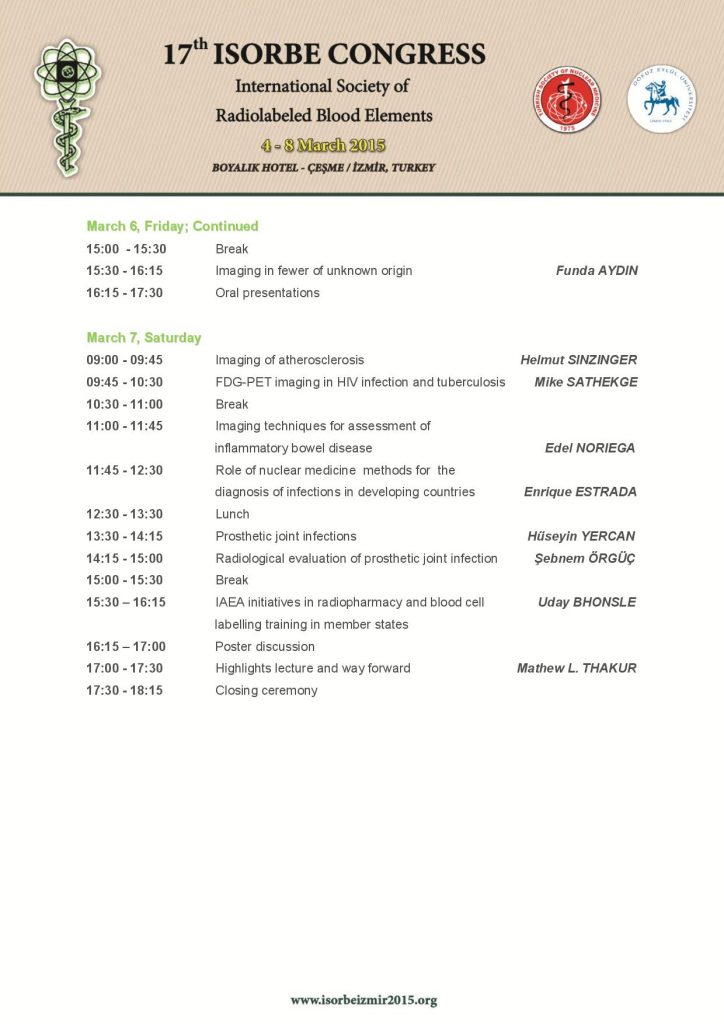
POSTER WINNER
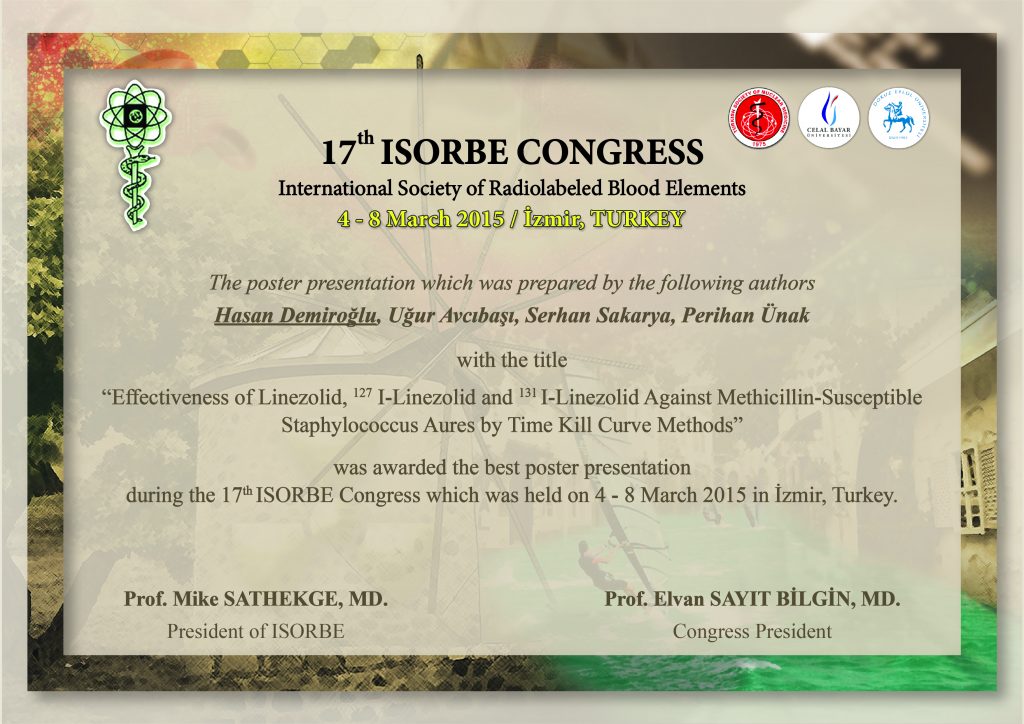
3rd ISORBE WORKSHOP – KUWAIT – February 9th to 11th
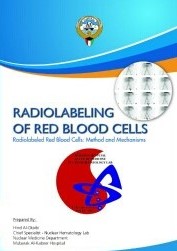 The 3rd ISORBE workshop for „Radiolabeled red blood cells“ was held in the Mubarak Al Kabeer hospital in Kuwait on February 9th to 11th , organized by our ISORBE member Hind Al-Otaibi, chief specialist in Nuclear Haematology lab, and Nafeesa Kazem, Head of the Department, University of Kuwait . The workshop had methods and mechanisms as objective target.
The 3rd ISORBE workshop for „Radiolabeled red blood cells“ was held in the Mubarak Al Kabeer hospital in Kuwait on February 9th to 11th , organized by our ISORBE member Hind Al-Otaibi, chief specialist in Nuclear Haematology lab, and Nafeesa Kazem, Head of the Department, University of Kuwait . The workshop had methods and mechanisms as objective target.Professor Helmut Sinzinger was the international speaker.The workshop, lectures and practical sessions dealt with operator and patient safety issues associated with radiolabeled autologous blood products. Also currently available methods by which human red blood cells are labeled with Tc-99m for clinical use and their pharmacokinetics were discussed. The list of several drug-drug interactions that interfere in the labeling process and the role of each component found in products used to radiolabel human red blood cells with Tc-99m were also considered.
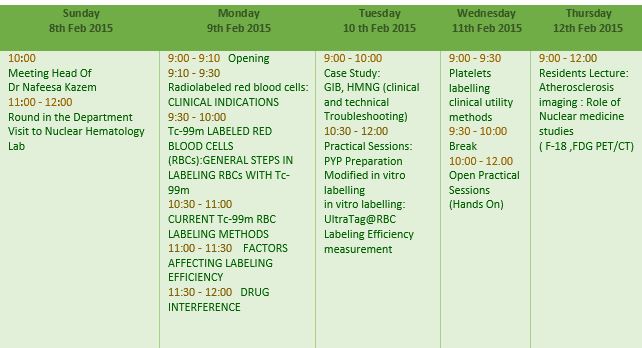
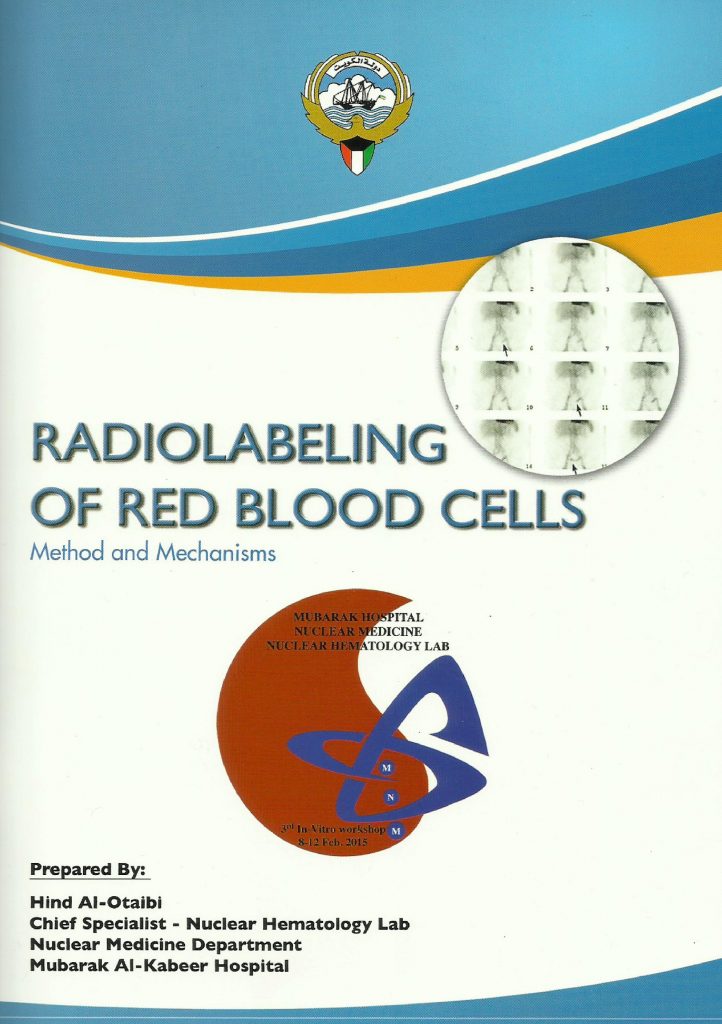
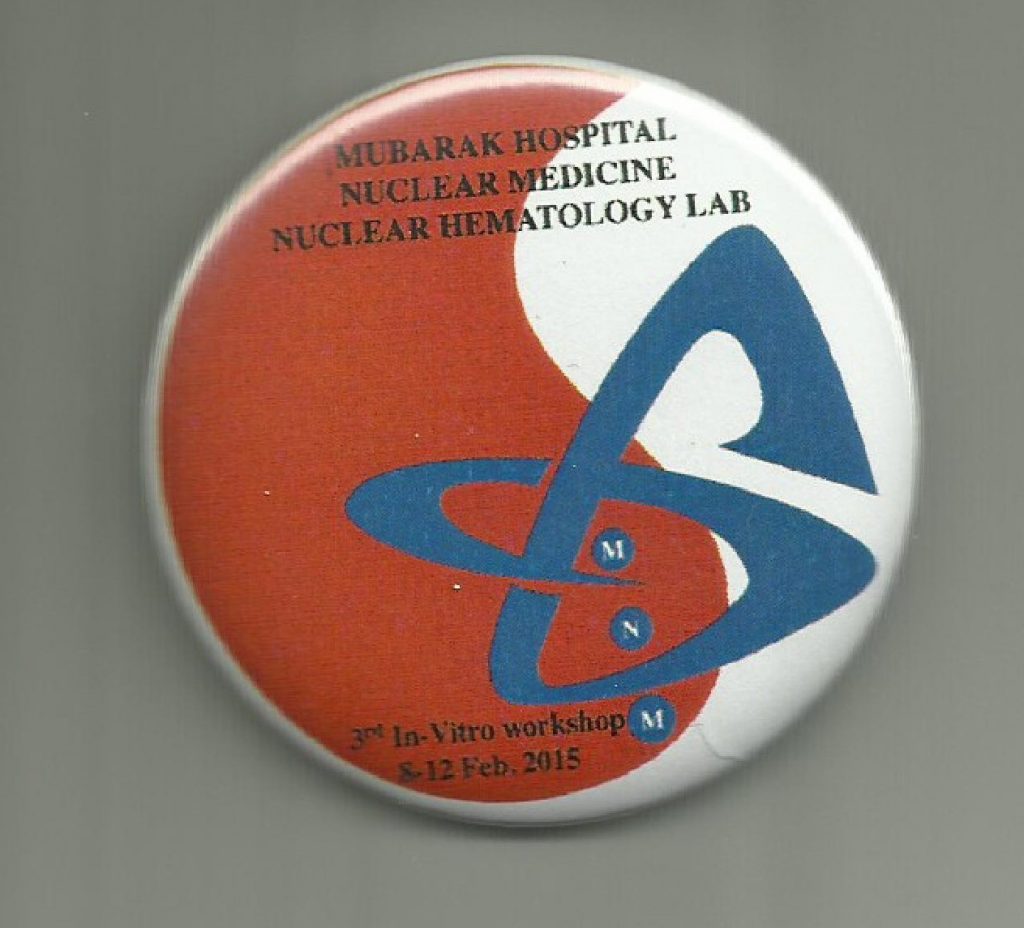
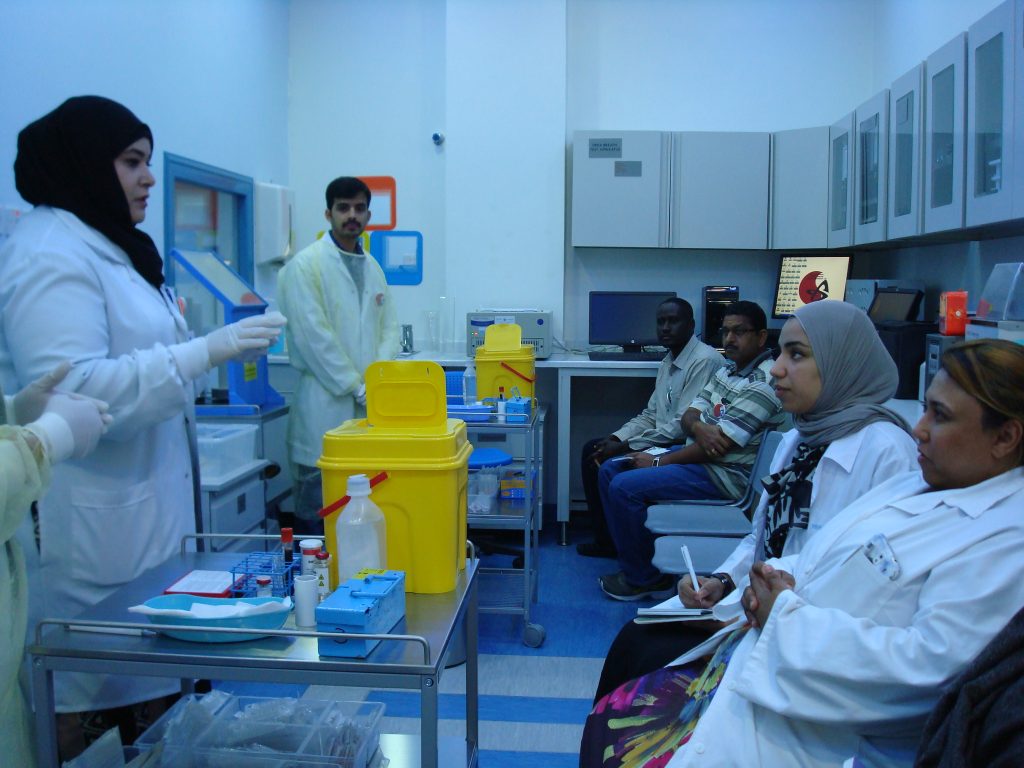
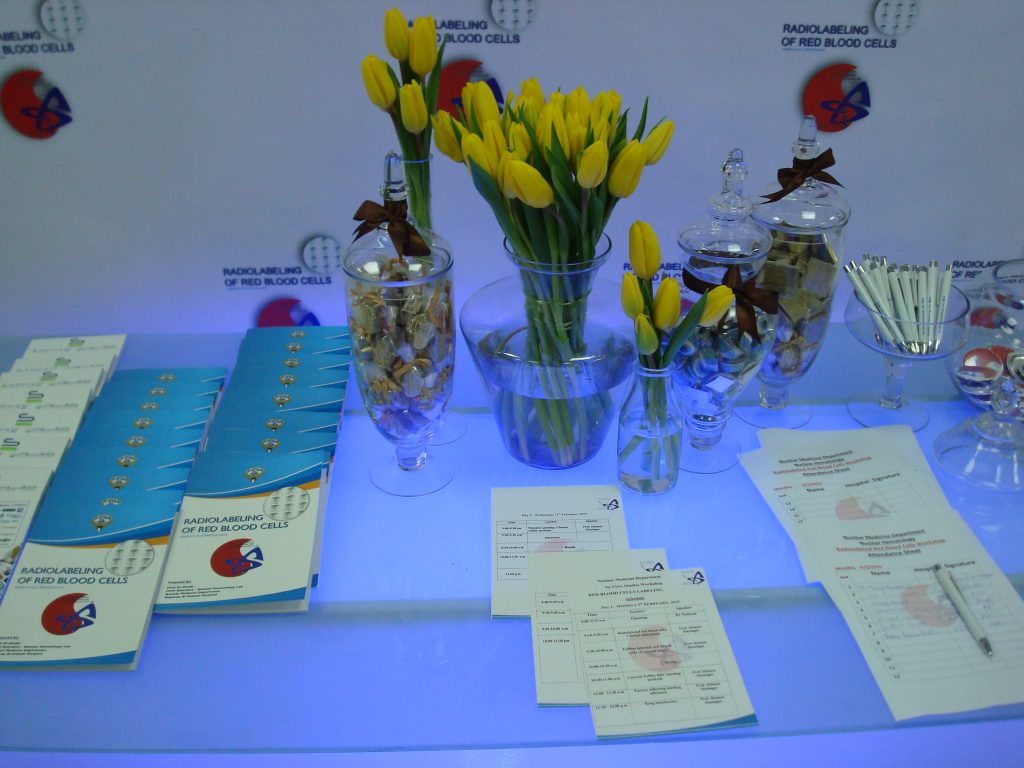
International Society of Radiolabelled Blood Elements (ISORBE) Symposium and Workshop – 2014
International Society of Radiolabelled Blood Elements (ISORBE)
Symposium and Workshop
CELL THERAPIES AND CELL LABELLING
April 27th – 29th, 2014 Helsinki, Finland
To quote ISORBE president Mike Sathekge, the latest ISORBE symposium and workshop in Helsinki was a forum for doctors, technologists, and interested parties to share the “latest technology under one roof” and a way to combine “bedside-teaching with bench-teaching.”
The first day of the symposium took place in the modern Docrates Cancer Center, beginning with an overall introduction of cell labeling. The majority of the day dealt with stem cell imaging and current research of different therapeutic uses of stem cells. Several interesting and well-conducted presentations demonstrated the wonderful research opportunities arising/being conducted with stem cells and the future therapeutic impact that they can have. The symposium came to a close with some fantastic presentations on FDG PET/CT and its use in diverse diseases, such as AIDS and sarcoidosis. At the end of the day, we broke off into small groups and received a tour of the only privately funded cancer center in northern Europe- all I can say is amazing! (With all offices having a wonderful view of the river, one could never get tired working there!) The Get Together Party organized for that evening was a great way for people to mingle, share views and ideas, as well as discuss impressions of the day’s presentations.
On the second day, we were brought to the Finnish Red Cross Service and MAP Medical Technologies. We picked-up with cell-labeling, stem cell labeling and then moved on to stimulating presentations on stem cell therapies, such as cardiac cell therapy. After lunch, we received personal tours of the facilities, including dressing up in full-body suits (and looking a little like the marshmallow man!) before entering the MAP laboratory! While not as modern as the Docrates Cancer Center, the laboratories were nonetheless impressive and the tours very informative and well conducted.
Overall, the symposium and workshop was a success between participants from a range of different countries. To quote Prof. Kairemo, “We can do anything, we just have to understand how it works.” And there is no better way to try and understand how something works, but to share knowledge.
Below are some pictures of the symposium I hope you all enjoy!
Dr. Lindsay Brammen
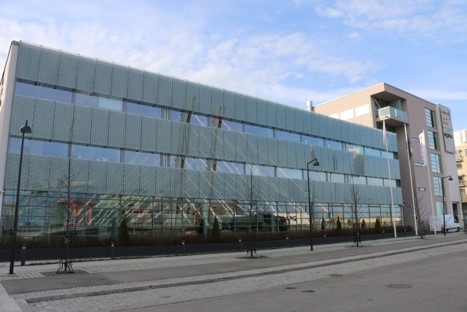
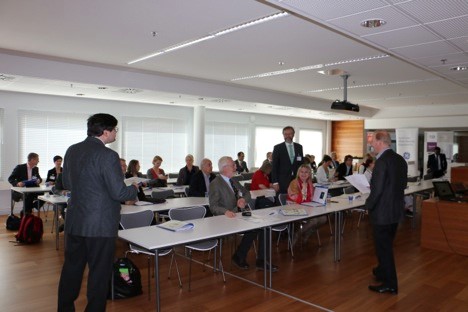
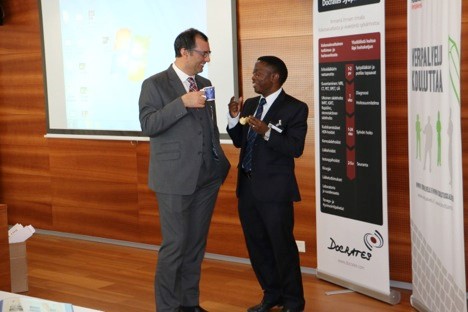
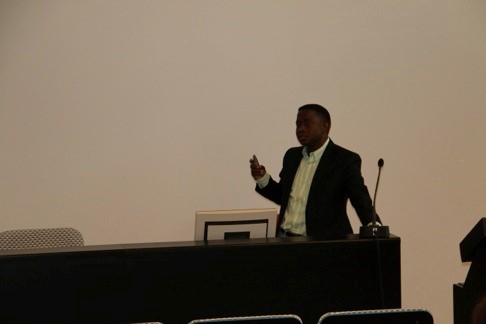
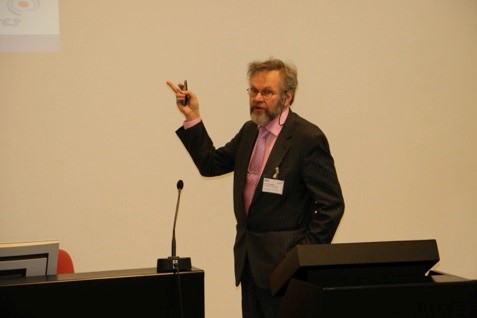
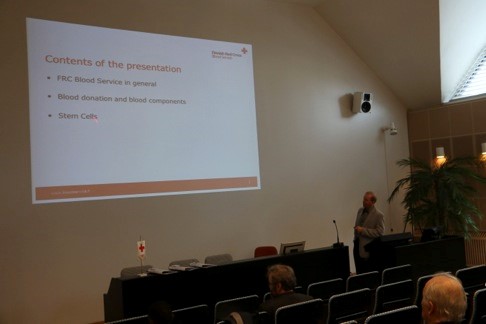
EDITORIAL
The ISORBE symposium and workshop for ”Cell Labeling and Cell Therapies” was held in Helsinki 27-29.4.2014. In this event nuclear medicine and cell therapy researchers combined their forces for a joint effort. There were more than 60 participants from 14 countries, and 17 invited lectures were given. 16 of the congress abstracts are published here.
The congress dealt with conventional cell labeling and its clinical applications, stem cell, T-cells, dendritic cells and bone marrow mononuclear cells.labeling for PET, SPECT, MR, US or optical imaging.
Demonstrations included visits to EU GMP-class cell production facilities including stem cells and to EU GMP- radiopharmacy laboratories. In the nonclinical studies, various methods for in vivo cell tracking were presented, including multiphase immunotherapeutic, cell therapy or gene therapy applications.
One of the highlights included oncolytic virotherapy which has also been suggested to enhance epitope spreading by direct oncolysis of tumor cells, leading to enhanced antigen presentation by dendritic cells and increased immunogenicity of the established tumor by providing a virus mediated signal. These approaches can be followed in nonclinical studies.
SPECT imaging as the most sensitive noninvasive animal imaging technique for a short-term cell tracking was demonstrated e.g. for cell homing following transient occlusion of cerebral artery in rats, and for studying biodistribution kinetics and targeting of intravenously administrated mesenchymal stem cells(MSCs) from two different sources, bone marrow and cord blood.
There was also emphasis for clinical studies to require adaptation of USP 797 for radiolabeling of cells. This follows on the ISORBE consensus on the minimum requirements of a cell radiolabeling facility which was created in 2009. Presenters demonstrated that recent clinical applications include mesenchymal stem cells, T-cells, dendritic cells and bone marrow mononuclear cells. Currently, at least 15 different stem cell or other therapy products are already undergoing phase 3 trials.MSCs are found in vivo as pericytes, and they function as osteoblast, chondrocyte, adipocyte and bone marrow stromal cell progenitors during bone growth and repair. Although MSCs have been safe in over 2000 patients hitherto treated, knowledge of eventual rejection may be an additional safety guarantee against untoward effects.
Therapeutic cells are subjected to extensive manipulation during production, potentially introducing deleterious changes. Cells must be tested for identity and functionality, screened for genomic changes, and excessive numbers of senescent cells in therapeutic cell preparations must be avoided
Some of the progress includes, more than 200 cardiological patients with various forms of cardiac muscle damages were treated by systemic MSC transplantation. Nonclinical and clinical cardiac cell therapy based on bone marrow mononuclear cell delivery as well as epicardial transplantation of cell sheets was also presented.
Furthermore, 6 clinical trials with MSC infusion in different settings including Hematopoietic Cell Transplantation (HCT) with myeloablative or non-myeloablative conditioning, Umbilical Cord Blood Transplantation (UCBT), prevention of rejection in solid organ transplant (liver and kidney) and auto-immune diseases (Crohn) were presented.
Interestingly, dendritic cell (DC) based vaccinations to treat melanoma patients were analyzed carefully multiple imaging modalities, such as scintigraphy, MR and PET/CT. In this congress, also FDG-PET was discussed thoroughly, because it is replacing WBC imaging in the clinical routine. Also, other conventional cell labeling techniques were discussed briefly in order not to forget ISORBE foundation.
With PET-studies it is possible improve our understanding of the pathogenesis of HIV infection and the value in the clinical decision making of HIV patients presenting with AIDS-related opportunistic infections such as TBC and malignancies.FDG PET/CT is a valuable technique in diagnosis and assessment of disease activity in patients with sarcoidosis. FDG-PET can be used localization of abnormal foci guiding the etiological diagnosis in case of fever of unknown origin, in the diagnosis of infection in diabetic patients suspected of Charcot’s neuroarthropathy, osteomyelitis and/or tissue infection, in the evaluation of painful hip prosthesis and vascular prosthesis, in the evaluation of inflammatory bowel disease, in the vasculitis involving the great vessels (giant cell arteritis), and in the therapy follow-up in unresectable alveolar echinococcosis.
This congress gave in 2 days a comprehensive review about current global status in stem (cell) labeling and fresh overview about cell therapies including in vivo cell trafficking by multiple imaging modalities. ISORBE has shown that it can develop and face new challenges, because the original applications of radiolabeled blod elements are inevitably decreasing.
Kalevi Kairemo Mike Sathekge
Docrates Cancer Center University of Pretoria
Helsinki, Finland South Africa
Chairman of the Local Organizing Committee President of ISORBE
Abstracts Helsinki
Cell labeling and cell therapies -introduction
Kalevi Kairemo, MD, PhD
Chief Physician, Molecular Radiotherapy & Nuclear Medicine
Docrates Cancer Center, Helsinki, Finland
in vivocell tracking is a new technique which can be applied for sophisticated biological targeted therapies.
Cell labeling using radionuclides is known since 70´s e.g. for targeting infections or for imaging various elements in the blood pool.
Because of giant development especially in the imaging technologies during the last decade, this cell tracking research has become very active in basic, nonclinical and clinical aspects. Cells can be localized noninvasively in pathological conditions using morphologic (such as US, CT, MRI), radionuclide (PET or SPECT) imaging methods. This allows in vivo cell tracking in all kind multiphase immunotherapeutic, cell therapy or gene therapy applications.
The characteristics of the imaging modalities are summarized in the Table.
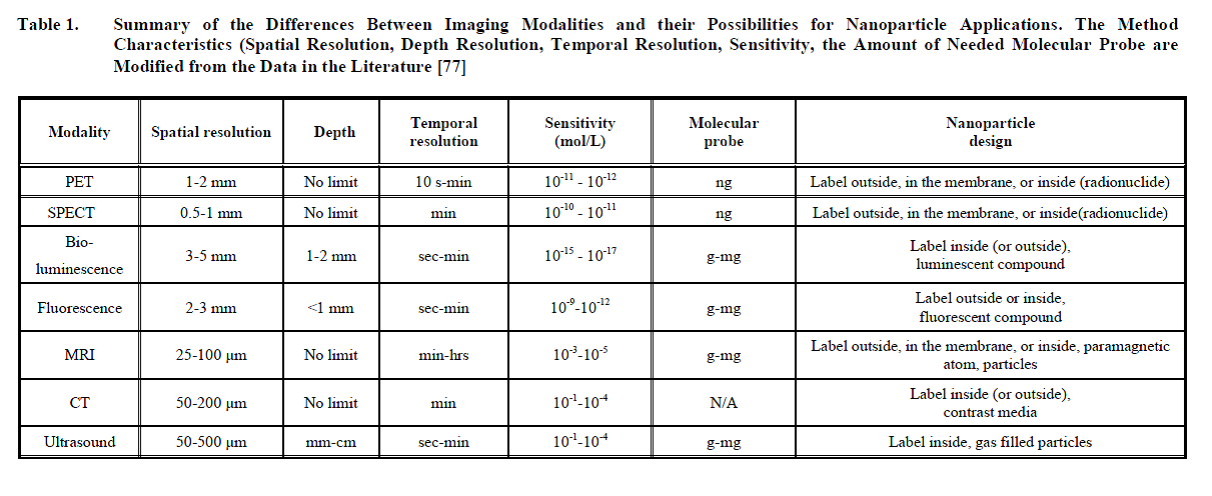
Data from Kairemo et al. Curr Radiopharm 2008; 1(1): p. 34
In this workshop, GMP production prerequisites for both radiopharmaceuticals and cell products will be discussed and production facilities will be visited.
Radiolabeled Cells, 2014
Kutlan S. Ozker, MD, PhD
Associate Professor of Radiology, Professor of Radiopharmacy
Medicheck Radiopharmaceutical Center, Istanbul, Turkey
This talk is an update on the safety and efficacy of cell radiolabeling. Briefly, US regulations related to pharmaceuticals will be explained focusing on the safety aspects for the preparation of radiolabeled cells. Accordingly adaptation of USP 797 regulations will be discussed with special emphasis on radiolabeling of cells. 2009 ISORBE consensus on the minimum requirements of a cell radiolabeling facility will be explained as well as quality assurance for such facilities. Clinical prerequisite for the use of radiolabeled cells and radioactive agents will be discussed. Advantages and limitations of radiolabeling of various cells and radiopharmaceuticals used for radiolabeling will also be discussed.
Overview of Current Cell Therapies
Petri Lehenkari, Prof.
University of Oulu, Finland
Cell therapy means usage of live cells for therapeutic purposes. The era of Cell Therapy can be said to have begun at 1818, after successful blood transfusion by Dr. James Blundell, as he mixed donor and recipient blood in a naïve form of cross-matching. Since then, blood, all it’s derivative cells have been used for therapy, and finally, bone marrow and hematopoietic cells became clinically available after 1950’s pioneering work by E. Donnall Thomas and Georges Mathé.
Currently, stromal, non –hematogenic cells are being vigorously developed for therapeutic use, and additionally, different new blood cell derivatives, including bioengineered NK cells are being tested for cancer therapy. The current boom in the use of these cells begun after cloning experiments and advances in stem cell research at late 1990’s. Currently, at least 15 different stem cell or other therapy products are already undergoing phase 3 trials. In USA government registration site, www.clinicaltrials.gov, 26340 studies can be found for search with “cell therapy”, and 4377 studies are done using “stem cells” alone. In Europe, EMEA, European Medicinal Agency, is controlling these therapies under ATMP, Advanced-Therapy Medicinal Products –regulation and the market is developing fast,
In most studies, the focus has shifted from tissue regeneration to control of inflammation and similar paracrine, and tissue homeostasis effect inflicted by the transplanted cells. The most progressively advancing therapy in research perspective is currently the anti-cancer use of different cells, the numer of these studies has tripled in 2 years. The most popular cells used are in this order: mesenchymal stem cells, T-cells, dendritic cells and bone marrow mononuclear cells. Most of the studies are done in USA, where increase can be observed. In China, second in cell therapy research, the number of new studies has been in decline. In the presentation, I will give a more detailed overview of all accepted therapies, undergoing studies and my own opinion on future perspectives. Additionally, differences in risk profile between stromal cells will be discussed, especially following the death case after wild transfusion of adipose tissue derived mesenchymal stem cells.
Distribution and Therapeutic Mechanisms of Systemically Administered Mesenchymal Stem Cells
Matti Korhonen, MD, PhD
Cell Therapy Services, Finnish Red Cross Blood Service. Helsinki, Finland
Mesenchymal stem cells (MSC) are found in vivo as pericytes, and function as osteoblast, chondrocyte, adipocyte and bone marrow stromal cell progenitors during bone growth and repair. They also play a role in facilitating angiogenesis. MSCs are easily differentiated into osteoblasts, chondrocytes and adipocytes in vitro, implying that they are a readily accessible source for regenerative therapies. Another therapeutically promising property is their immunosuppressive potential. MSCs influence several key cell types that are involved in the immune response; they attenuate CD8+ T-cell proliferation, direct dendritic cells to the tolerogenic phenotype and macrophages from M1 to the anti-inflammatory M2 phenotype. Furthermore, they induce CD4+ T-cell differentiation towards regulatory T instead of Th1 or Th17 T-cells.
MSCs are ‘licenced’ to mediated their immunosuppressive action by IFN-gand other proinflammatory mediators in the local inflammatory mileu, resulting in secretion of immunomodulatory mediators such as IDO, NO, PGE2, TGF-b, which, together with direct cell-cell contact modulate the immunologically active cells.
For immunosuppressive therapies, MSCs are usually administered systemically via the i.v. route. The cells are arrested in the lungs for several hours, and are gradually dislodged and end up in internal organs, the spleen and lymph nodes. It is not known whether MSCs do reach (or indeed need to reach) the target organ in high numbers in order to affect systemic immunosuppression. Interestingly, even MSCs arrested in the lung can secrete mediators such as TSG-6 to mediate a systemic effect.
Both the administration route and the therapeutic cells themselves can be modified to improve cell homing to target organs. For example, cells may be administered intra-arterially vie the internal carotid artery for ischemic stroke. Treating the cells with pronase transiently modifies the cell surface adhesion molecule repertoire, resulting in decreased lung trapping and increased homing to sites of inflammation.
Systemically administered MSCs face rejection in allogeneic hosts. von Bahr et al. (2012) studied autopsy material from 18 patients and showed that MSCs are rejected by the host during the first few months after infusion. Although MSCs have been safe in over 2000 patients hitherto treated, knowledge of eventual rejection may be an additional safety guarantee against untoward effects.
Enhancing adoptive T-cell therapy with oncolytic viruses
Siri Tähtinen1and Akseli Hemminki1,2
1Cancer Gene Therapy Group, Department of Pathology and Transplantation Laboratory, Haartman Institute, University of Helsinki, Finland
2TILT Biotherapeutics Ltd, Helsinki, Finland
Novel immunologic therapies are constantly developed for cancer treatment. Adoptive cell therapies (ACT) are a recent potent approach for treating cancer and adoptive transfer of autologous tumor infiltrating lymphocytes (TILs) or genetically re-directed peripheral blood mononuclear cells have successfully been used to treat patients with advanced solid tumors as well as patients with hematologic malignancies. Potential limitations of ACT efficacy include the lack of trafficking of transferred cells to tumors, inability to kill tumor cells due to anergy or halted lymphocyte proliferation resulting in a rapid decline in cell numbers. Oncolytic virotherapy on the other hand is the use of cancer cell specific, conditionally replicative viruses in the treatment of cancer. Besides lysing tumor cells, the immune system plays a crucial role with oncolytic viruses. We and others have shown that oncolytic adenovirus can trigger immune responses that result in redistribution of immune cell subsets in the tumor, while still maintaining good safety profile in patients. Oncolytic virotherapy has also been suggested to enhance epitope spreading by direct oncolysis of tumor cells, leading to enhanced antigen presentation by dendritic cells and increased immunogenicity of the established tumor by providing a virus mediated danger signal in the form of PAMP (pathogen-associated molecular pattern). Novel approaches to combine these two established forms of immunotherapy have shown promising results and improved treatment efficacy in recent preclinical studies. Currently the combination approach is being further developed by TILT Biotherapeutics Ltd with the aim of launching phase I clinical trials for the treatment of cancer.
Tracking dendritic cell based vaccines in melanoma patients;
lessons from the clinical studies
Erik Aarntzen, MD, PhD
Radboud University Nijmegen Medical Centre, The Netherlands
Our lab has been among the first to exploit dendritic cell (DC) based vaccinations to treat melanoma patients. Over the past years, immunological responses are increasingly reported and clinical responses have consistently been observed. Moreover, DC based vaccination often has much milder side effects than standard chemotherapy or current novel immune checkpoint inhibitors. However, to efficiently interact with the effector cells of the immune system, the ex vivo activated and antigen loaded DC should be correctly delivered to the lymph nodes (LNs). Imaging tools for in vivo tracking of DC based vaccines have been pivotal for our understanding of the processes underlying success or failure of this intensive, costly and highly personalized therapy. This presentation will give an overview of our approach to optimize DC based vaccinations using multiple imaging modalities, such as scintigraphy, MR and PET/CT, to provide complementary information. We have developed protocols to quantify the number of DCs at the relevant site, with high resolution anatomical context to allow differentiation of LNs and the possibility of longitudinal data acquisition. Furthermore, in vivo assessment of the ensuing immune response has been investigated using positron emission tomography (PET), exploiting [18F]-labeled 3’-fluoro-3’-deoxy-thymidine ([18F]FLT) and a [18F]-labeled fluoro-2’-deoxy-2’-D-glucose([18F]FDG).
Using DC, labeled with [111In] oxine and ultrasmall iron particles (USPIO), we demonstrated that combined scintigraphy and MR imaging allows accurate assessment of inter- and intranodal migration of DC upon ultrasound guided intranodal injection. It allows quantification of very low numbers of DC in conjunction to detailed anatomical information. When loaded with 30 pg Fe/cell, numbers as low as 1 000 cells/mm3 could be imaged at 3 Tesla.
Next, we have developed a method for the direct assessment of immune responses in vivo in a clinical setting. Melanoma patients with lymph node (LN) metastases received dendritic cell (DC) vaccine therapy, injected intranodally, followed by [18F]FLT) PET at varying time points after vaccination. De novo immune responses were readily visualized in treated LNs early after the prime vaccination, and these signals persisted for up to 3 weeks. This selective [18F]FLT uptake was markedly absent in control LNs, although tracer uptake in treated LNs increased profoundly with as little as 45 000 DCs. Immunohistochemical staining confirmed injected DC dispersion to T-cell areas and resultant activation of CD4+ and CD8+ T cells. The level of LN tracer uptake significantly correlates to antigen-specific immune responses measured in peripheral blood. This correlation was not observed with [18F]-labeled fluoro-2’-deoxy-2’-D-glucose. So, even these limited numbers of DC have high immune inducing potential. However, in case the vaccine was not correctly delivered, neither subsequent migration, nor an immune response was induced.
For this reason, we examined intradermal administration, which is technically less challenging and suitable for routine use in clinical trials. It appeared that although consistently maximum of 4% of the injected cells reach the draining LNs, intradermal vaccination resulted in superior antigen specific T cell induction when compared with intranodal vaccination. Pretreatment of the skin at the injection site in order to create an pro-inflammatory environment or enhance survival did not improve migration rates. Further reducing cell numbers per vaccine to below the current scintigraphic detection limit, might hold the next clue for optimizing vaccine delivery.
Mesenchymal stem cell in therapy and diagnostics
Anatoly G. Konoplyannikov, MD
Medical Radiological Research Center, Obninsk, Russia)
Experimental work with mesenchymal stem cells (MSC) from laboratory animals and human, which were open in 1968 by our compatriot Alexander Fridenshtein, began in our Center (MRRC) more than 40 years ago. The first transplantation of autologic MSC, that was grown up in our laboratory, in heart damaged sites was carried out by known surgeon Renat Akchurin in 2003 during cardiac shunting surgery. Good results of such MSC transplantation stimulated our team to continuation ofpreclinical and clinical researches on application these cells for therapy of cardiological patients. In 2010 the Russian Health Ministry granted to our Center the license for systemic (intravenous) transplantation of autologic MSC to the patients with damages of cardiac muscle of various genesis, including damages produced after radiation therapy on chest cavity tissues (Hodgkin lymphoma, mammary gland cancer and others). Now we have experience of successful therapy more than 200 cardiological patients with various forms of cardiac muscle damages by method of systemic MSC transplantation. In some cases such therapy was combined with action of low-intensive laser therapy and other agents who strengthen regenerative effect of MSC. In the report some examples of such successful cell therapy of heart diseases will be given. We paid attention that our cardiological patients often had diabetes which expressivenessalso was weakened after MSC transplantation. Therefore now we expand researches on use of MSC transplantations at various forms of diabetes. By us it is also shown that systemic and local MSC transplantation has the expressed medical effect at patients with late radiation injuries of such organs as rectum and bladder. Now we cooperate with some Moscow’s medical centers and found high therapeutic effect of transplantations of autologic or allogenic MSC in patients with Crohn disease and at MDR- tuberculosis. As MSC are capable to homing in the zones of tissues damage that MSC marked by radioactive isotopes can be used for radioisotope diagnostics. The first data obtained by us on this question will be provided in the report. These data allow to hope that in the near future will be applied MSC not only to therapy of various diseases, but also MSC will enter into an arsenal of radioisotope diagnostics.
Mesenchymal Stromal Cells: banking aspects and clinical applications
Chantal Lechanteur, MD
CHU of Liège, Belgium
Mesenchymal Stem/Stromal Cells (MSC) exert powerful immunomodulatory effects in addition to showing ability to multilineage differentiation and being a key element to the hematopoietic micro-environment.
These properties make these cells of great interest for clinical applications in Hematopoietic Stem Cell Transplantation (HSCT) and in immune diseases such as Graft-Versus-Host Disease (GVHD) and Crohn’s Disease (CD) but also in Solid Organ Transplantation.
MSC constitute a heterogeneous population of spindle-shaped, plastic-adherent cells isolated from various sources, such as bone marrow, adipose tissue, umbilical cord or cord blood. They can be easily isolated and expanded in vitro toreach adequate numbers for therapeutic doses.
In the Laboratory of Cell and Gene Therapy (LTCG, Hematology department, CHU of Liège), we have set up in late 2006 a “MSC bank” based on clinical-grade expansion of MSC from BM samples obtained from healthy donors volunteers. Cells are produced according to the European Group for Blood and Marrow Transplantation (EBMT) MSC expansion consortium guidelines.
In a first pilot clinical protocol initiated in 2007, we have demonstrated that MSC infusion as prevention for graft rejection and GVHD after allogeneic hematopoietic cell transplantation with nonmyeloablative conditioning was feasible and safe. Based on these promising findings, a phase II randomized study was initiated in 2010 in the same indication.
We are now involved in 6 clinical trials with MSC infusion in different settings including Hematopoietic Cell Transplantation (HCT) with myeloablative or non-myeloablative conditioning, Umbilical Cord Blood Transplantation (UCBT), prevention of rejection in solid organ transplant (liver and kidney) and auto-immune diseases (Crohn).
SPECT imaging of cells after intravascular delivery in ischemic stroke
Jukka Jolkkonen
Institute of Clinical Medicine – Neurology
University of Eastern Finland, Kuopio, Finland
Cell-based therapy has emerged as a promising approach to restore brain function after cerebral ischemia. Intravascular administration of cells, which provides a broad distribution of cells to the close proximity of ischemic tissue, has perhaps the most immediate access to clinical applications. Surprisingly little is known about whole-body biodistribution of cells after intravascular delivery in stroke rats, which information is needed to understand how therapeutic cells work. Here we describe a small animal SPECT imaging as a noninvasive and translational technique for a short-term cell tracking and assessing cell homing following transient occlusion of middle cerebral artery in rats.
Tuberculosis and AIDS and PET
Mike Sathekge, MD, PhD
University of Pretoria, South Africa
HIV and Tuberculosis (TB) a “cursed duo”, continues to be a major public health problem. Hence a need for novel approaches for the diagnosis, treatment, and prevention of both HIV and TB.
The clinical and imaging features of HIV/AIDS are varied depending on the patient’s immune status. Currently with wide application of highly active antiretroviral therapy, the disease pattern has furthermore changed.
The value of PET applied to the metabolic evaluation of HIV and TB is increasingly recognized. With PET-studies improving our understanding of the pathogenesis of HIV infection and the value in the clinical decision making of HIV patients presenting with AIDS-related opportunistic infections such as TB and malignancies.
This presentation is intended to be a resourceful update and an aid to more accurate diagnosis of HIV and its comorbidities.
FDG PET/CT in sarcoidosis
Marina Hodolič, MD
Research Department, IASON GmbH, Graz, Austria
18F-Fluorodeoxyglucose positron emission tomography/computed tomography (18F-FDG PET/CT) play an important role in the assessment of inflammatory diseases. Sarcoidosis is a multisystem granulomatous disorder, most commonly involving lungs.
Diagnostic methods such as chest radiography, CT, MRI as well as conventional nuclear medicine modality 67Ga-scintigraphy, are used in routine diagnostic procedure for sarcoidosis.
FDG PET/CT is a valuable technique in diagnosis and assessment of disease activity in patients with sarcoidosis. As one third of patients have generalized lymphadenopathy, most commonly involving the cervical, axillary and inguinal lymph nodes, FDG PET /CT is unique “one shot” imaging modality that can give an answer about disease spread in the whole-body.
FDG uptake from sarcoidosis is not specific and can mimic other inflammatory and malignant processes, particularly lymphoma. Also, intensity of FDG uptake (SUVmax) is not useful for making initial diagnosis. Histologic proof is still the gold standard.
Despite this limitation, FDG uptake can decrease when sarcoidosis is treated, and this can be a useful tool in monitoring response to therapy.
It is important that pulmonologists, radiologist, nuclear medicine physicians recognize appropriate imaging modality in different patterns of sarcoidosis.
FDG-PET and PET/CT FOR IMAGING OF INFECTION/ INFLAMMATION
Ernest Pauwels, Prof.
Leiden University Medical Center, Leiden, NL
Pisa University Medical School, Pisa, Italy
F-18-fluorodeoxyglucose (FDG) is a well-established radiopharmaceutical for cancer detection. The reported mechanism of accumulation comes down to the enhanced rate of glucose utilization by neoplastic cells and its relatively high accumulation in nearby young granulomatous tissue. Supposedly, the FDG accumulation at sites of infection and inflammation is likewise due to the higher uptake of activated granulocytes, which use glucose as an energy source. Glucose transporters, abundantly present on the membrane of the activated cells, convey FDG through this membrane into the cell where the agent is trapped.
These features make that FDG uptake is a non- specific process, which is both a clinical advantage and a disadvantage. The advantage is that lesions of various etiology are mapped readily by whole body imaging. The disadvantage is that the accumulation does not provide information on the nature of the lesion. However, in the guidelines on clinical the use of FDG the European Medicines Agency (EMA) has mentioned a number of well- established applications in the field of infection/inflammation imaging ( www.ema.europa.eu). These include:
– Localization of abnormal foci guiding the etiological diagnosis in case of fever of unknown origin
– Diagnosis of infection in diabetic patients suspected of Charcot’s neuroarthropathy, osteomyelitis and/or tissue infection
– Evaluation of painful hip prosthesis and vascular prosthesis
– Evaluation of sarcoidosis
– Evaluation of inflammatory bowel disease
– Vasculitis involving the great vessels
– Therapy follow-up in unresectable alveolar echinococcosis
Unfortunately, for none of these applications large well- conducted clinical studies and trials have been performed as is evident from the reported literature. Nevertheless EMA reports that for the above-mentioned indications sufficient documentation is available.
See also: A. Glaudemans et al, 2013, article
Oula Peñate Medina, MD, PhD
Christian-Albrechts-Universität zu Kiel, Kiel, Germany
The goal of this work will introduce whole new more effective way to treat cancers and infections. There has been substantial improvements in the field of material sciences in the last decade. There are new versatile nanomaterials with new features available. However, these new advanced techniques have to be converted in to a clinically translated nanotechnological devices and delivery systems in medicine. There are several delivery problems that are hindering the optimal usage of anticancer drugs. Here we have chosen to solve the problem of unfavorable pharmaco kinetics of certain anticancer compounds by using a novel approach where we combine nanotechnology delivery technologies with cell targeting techniques. The only possible way to manage this kind of multiproblematic task is to use imaging techniques in cell tissue and animal levels of development. It is essential that the imaging techniques in all of these three levels can image the same compounds and nanocomposition and minimise the alterations caused from different labeling steps. Here is introduced different cell targeting approaches that have been carried to animal or patient trials. However, combination of these techniques increases the speed of development and allows rapid translation of targeting systems.
Clinical vs. preclinical results in cardiac cell therapy
Esko Kankuri, MD, PhD
Institute of Biomedicine, University of Helsinki
Cell transplantation for the treatment of heart disease, especially for ischemic heart failure, has been intensively investigated, and also clinical evidence of cardiac cell therapy efficacy has already accumulated for over a decade. Several cell types, autologous and allogeneic, from various source tissues have been investigated with great enthusiasm for therapy of heart failure patients. Translation of the preclinical protocols and discoveries has, however, not been straightforward. I review here some of the results of precilinical and clinical cardiac cell therapy based on our own research background on bone marrow mononuclear cell delivery as well as epicardial transplantation of cell sheets.
Quality and Safety of Therapeutic Mesenchymal Stromal Cells
Matti Korhonen, MD, PhD
Cell Therapy Services, Finnish Red Cross Blood Service, Helsinki, Finland
Novel cell therapies come with a promise of treatments that are mechanistically novel, address diseases with possibly no cure, or offer improved effect. However, they are also saddled with a number of risks that have to be carefully addressed.
Mesenchymal stromal cells (MSC) are typically expanded through 20-23 population doublings to reach cell preparations that are suitable for therapeutic use. Long exposure to cell culture *conditions and extensive expansion may subject cells to malignant genetic alterations. Furthermore, cells are commonly cultured in fetal calf serum, which is immunogenic and may transmit xenogeneic infections. Cells should undergo defined identity testing and analysis of functionality before clinical use. Use of platelet lysate circumvents problems associated with animal serum, and seems to produce MSCs that have similar surface marker profile and immunosuppressive potential as do cells that have been cultured using traditional methods.
The presence of senescent cells in therapeutic cell products may produce untoward effects, in addition to reduced potency. We developed a screening method based on automated image analysis of cell surface area for identifying senescent MSCs from therapeutic cell cultures. A dramatic increase in cell surface area accompanies cell aging during culture. This is correlated with cessation of cell proliferation, and changes in expression of cell cycle regulators of p16INK4a and p21Cip1/Waf1.
In summary, therapeutic cells are subjected to extensive manipulation during production, potentially introducing deleterious changes. Cells must be tested for identity and functionality, screened for genomic changes, and excessive numbers of senescent cells in therapeutic cell preparations must be avoided.
Targeting and imaging of intravenously administered mesenchymal stromal cells (MSCs) in animal models
Erja Kerkelä, PhD, Adjunct Professor
R&D Senior Scientist, Finnish Red Cross Blood Service
Intravenous infusion of therapeutic cells would be the most practical and least invasive way of administration in many cellular therapies, but leads to initial massive cell entrapment in the lungs. Currently, we do not know whether lung entrapment is harmful, but it certainlyhinders the bioavailability and homing of the cells to target tissue.Mesenchymal stromal cells (MSC) are thought to exert their therapeutic effect through immunomodulatory functions and paracrine mechanisms. Although systemic effects of MSCs can be beneficial, the targeting of MSCs to the injury site and local therapeutic effect are still considered critical for successful therapy.
We have used imaging technologies, especially single-photon emission computed tomography(SPECT-CT)for studying biodistribution kinetics and targeting of intravenously administrated MSCs. We have shown that MSCs from two different sources, bone marrow and cord blood, differ in their lung clearance rate and that cell surface fibronectin and other adhesion molecules influence on the phenomenon. We have also shown that an alternative cell detachment of MSCs with pronase instead of trypsin significantly accelerates the lung clearance of the cells in three different animal models and, importantly, increases their targeting to an area of inflammation. Pronase transiently cleaves the MSC surface proteins and fibronectin without compromising cell viability or stem cell potential.
The History of Blood Cell Labeling 2002 – 2014
Blood Cell Radiolabeling Certificate Course
3-5 July 2013
Thailand Institute of Nuclear Technology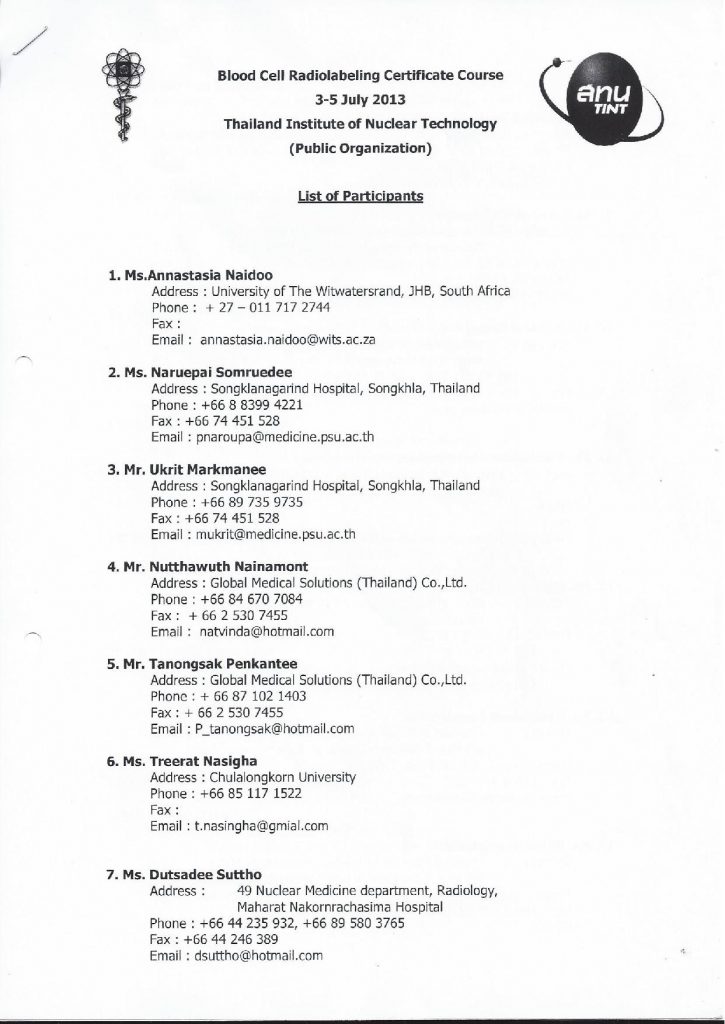
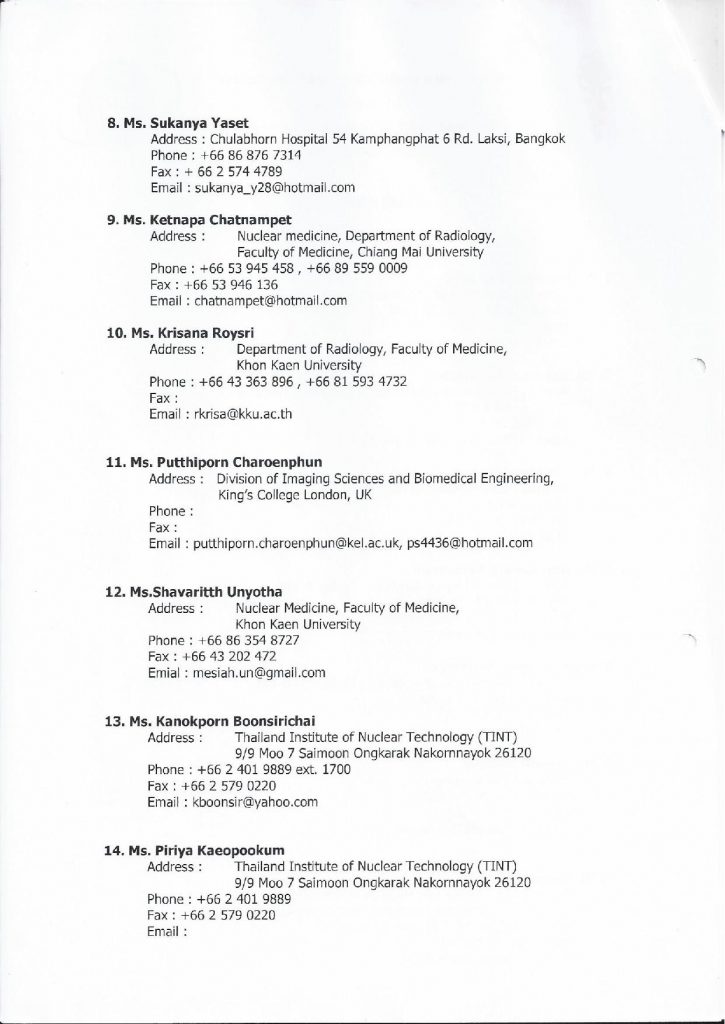
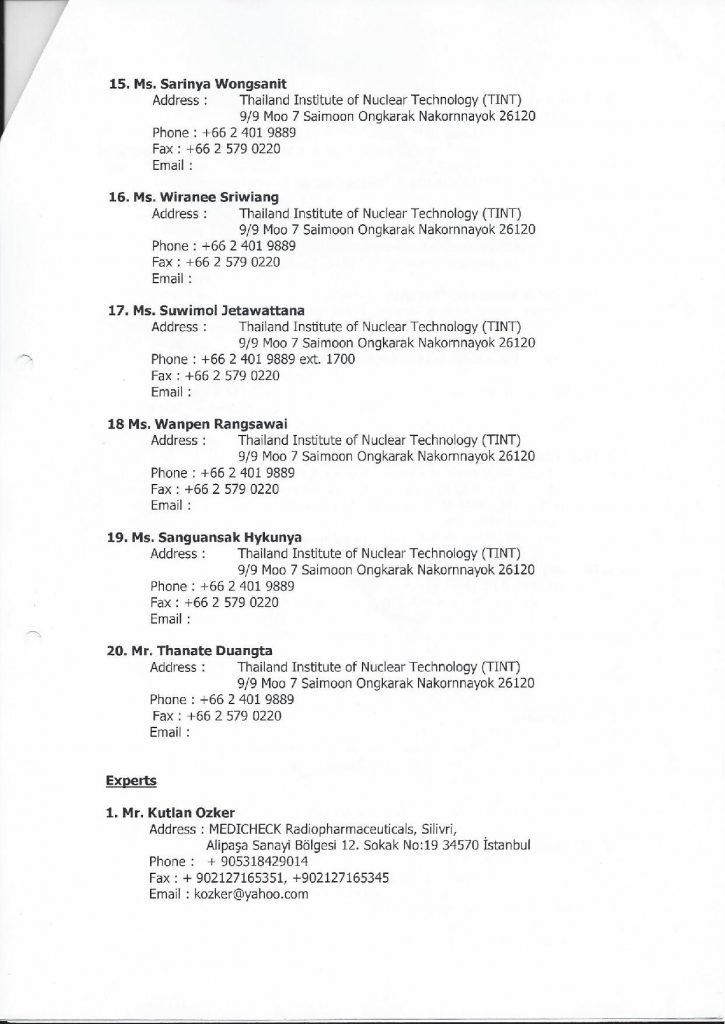
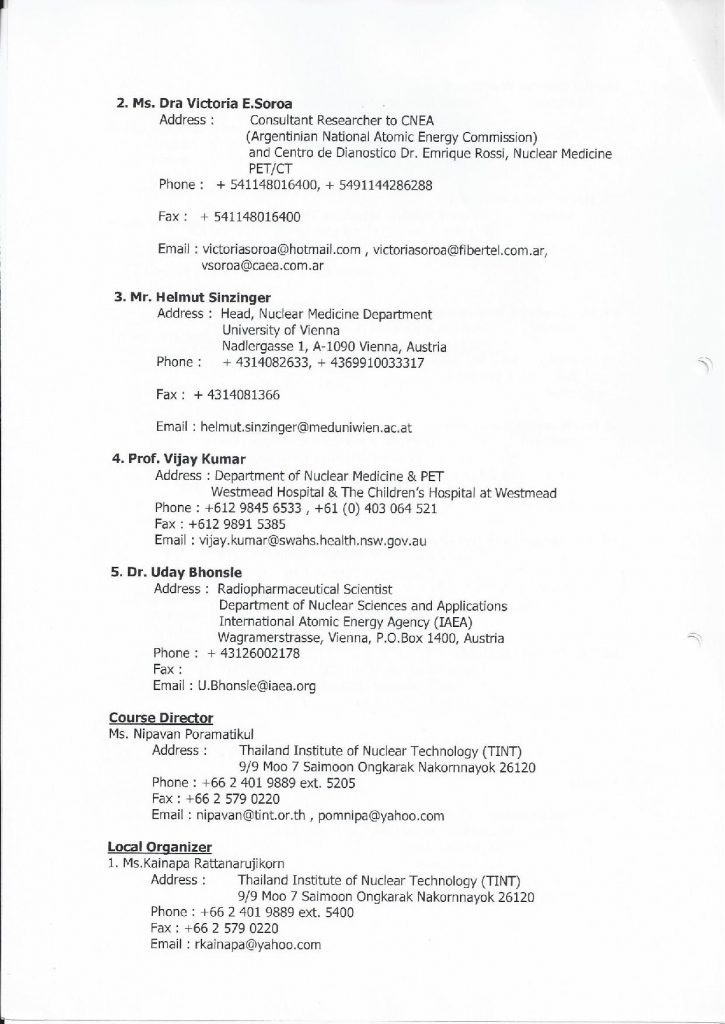
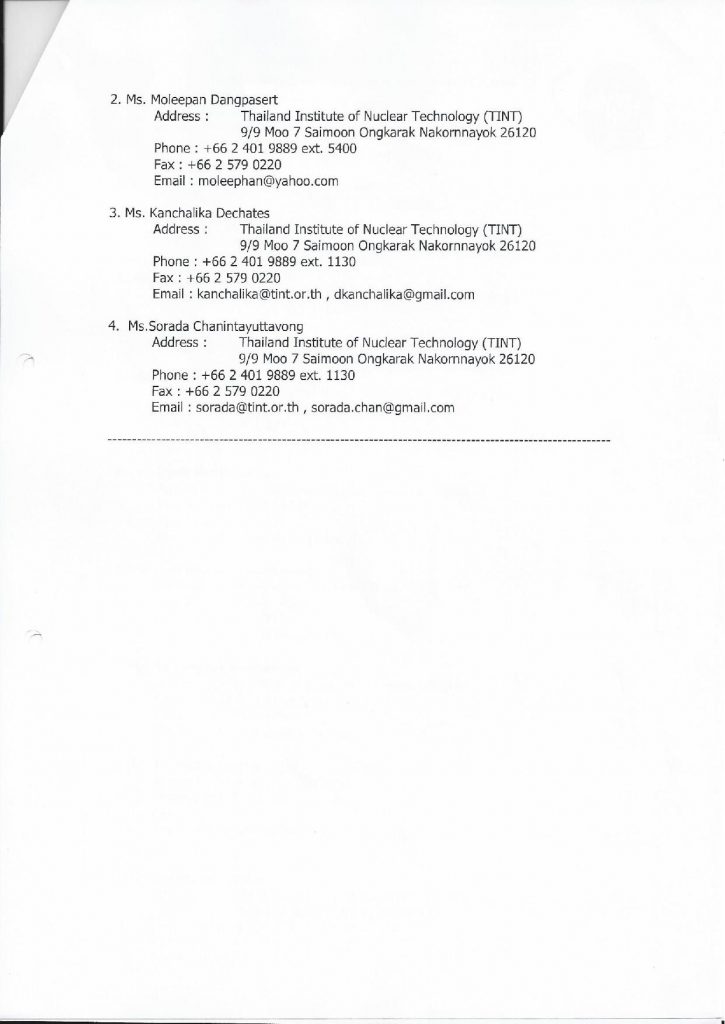
IAEA 3 – 7 December 2012 Cape Town, South Africa
IAEA 3 – 7 December 2012 Cape Town, South Africa
C7-RAF-2.008-008/12 Regional (AFRA)
Training Course on :
Radiolabelled Blood Products including
Radiolabelled White Cells for Infection Imaging
In cooperation with ISORBE

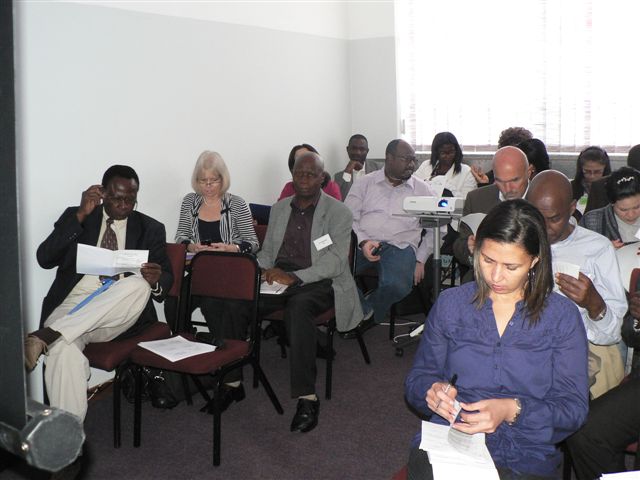
IZMIR, Turkey, October 5 – 7, 2012
Cerfiticate Programme on Radiolabeling of Blood Elements
IZMIR, Turkey, October 5 – 7, 2012
Venue: Institute of Nuclear Sciences, Ege University, Izmir, Turkey
ISORBE Education Committee: Victoria Soroa, Firat Gungor, Josep Martin-Comin, Kutlan Ozker, Christopher Palestro, Alberto Signore, Helmut Sinzinger
Course Director: Prof. Perihan Unak PhD, Co-Director: Assoc. Prof. Turkan Ertay, PhD
Local Organization Committee: Fazilet Z. Biber Muftuler, Serap Teksoz, Fatma Y. Lambrecht
Entry Requirements: B.Sc. degree majored in one of the Natural Sciences. Priority will be given to the candidates who have experience in the field.
Program Duration: 3 day didactic lectures and practicals, 12 week internship term (on the job training in an accepted facility under the supervision of an accepted tutor). The internship term can be spent in candidates‘ own country or a regional facility. The ISORBE education committee will work with the participants to find a suitable facility for their practical terms.
Registration Fee: Euro 50.-
Certificate: The candidate who has successfully completed the formal training and internship terms will be awarded by ISORBE “Certificate on Radiolabeling of Blood Cells”. Please note that the ISORBE Certificate on Radiolabeling of Blood Cells does not substitute for national and/or regional legal or regulatory provisions.
List of participants: Ayse Esra Arslan, Aslan Aygün, Burcu DirliSerim, Derya Sahin, Ebru Salmanoglu, Esra Alkan Ciftci, Habibe Güldem Mercanoglu, Harun Kazanci, Inanc Karapolat, Mine Sencan, Mohamed Hamrouni S. Abushhiwa, Neslihan Incili Artut, Nurhan Ergül, Özden Ülker, Özge Er, Payam Mohorammi, Rumeysa Tutar, Sabire Yilmaz Aksoy, Volkan Tekin, Hend Alotaibi, Maryam Abujarva, Emrah Birol, Baris Barlas.
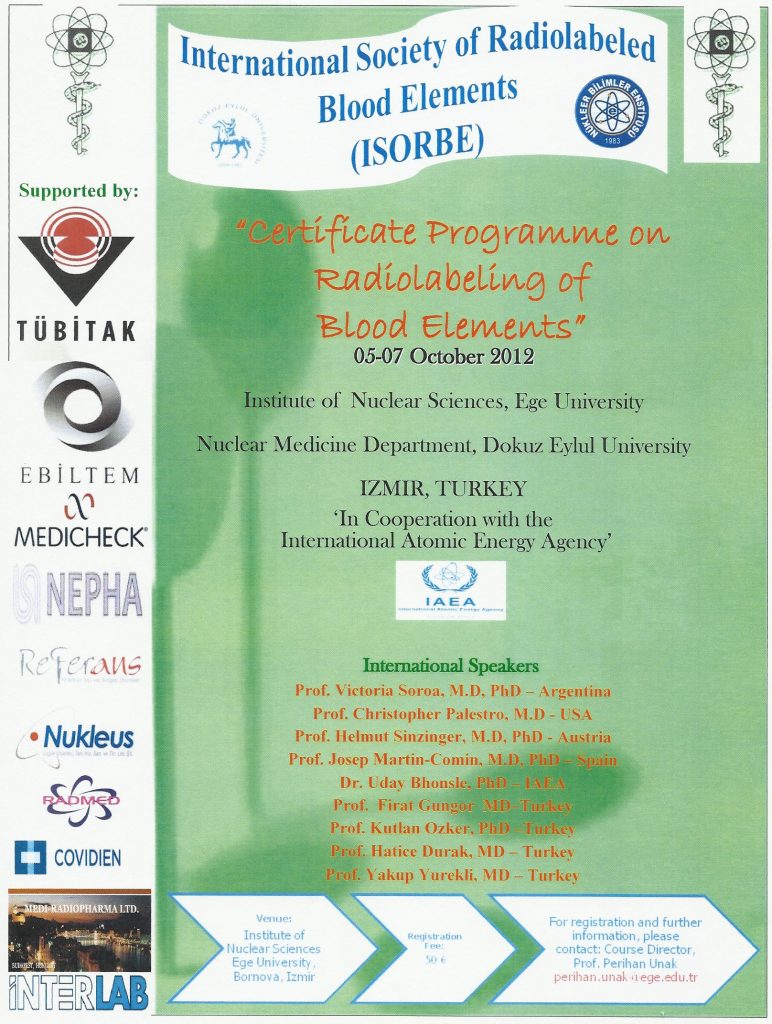
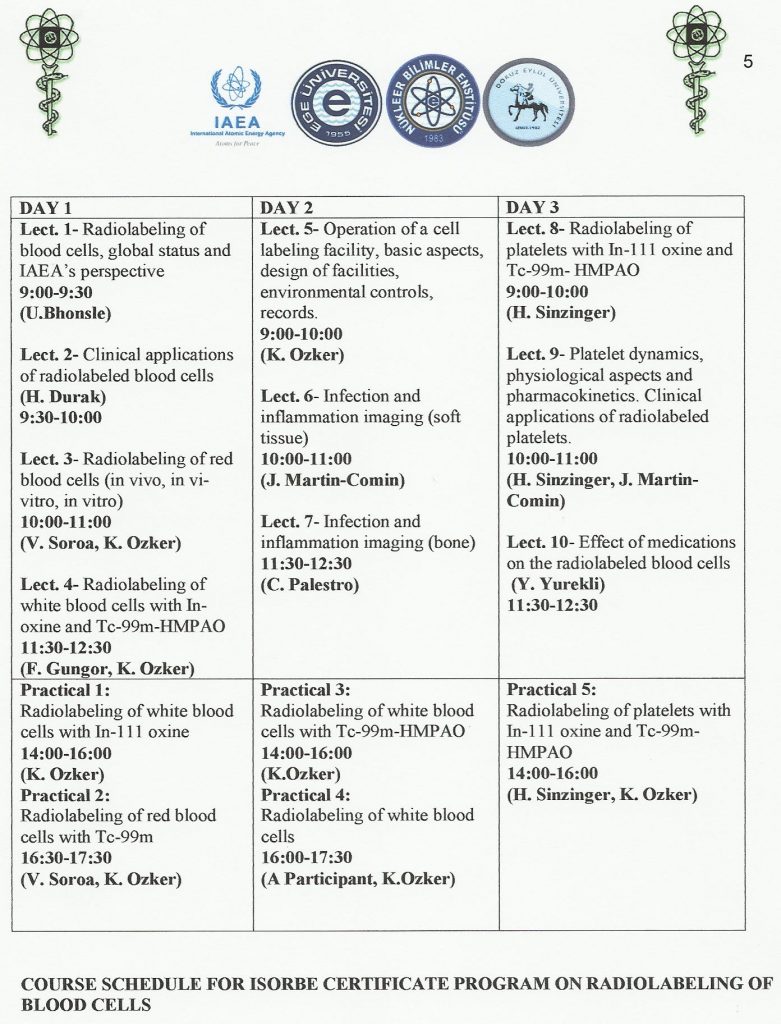
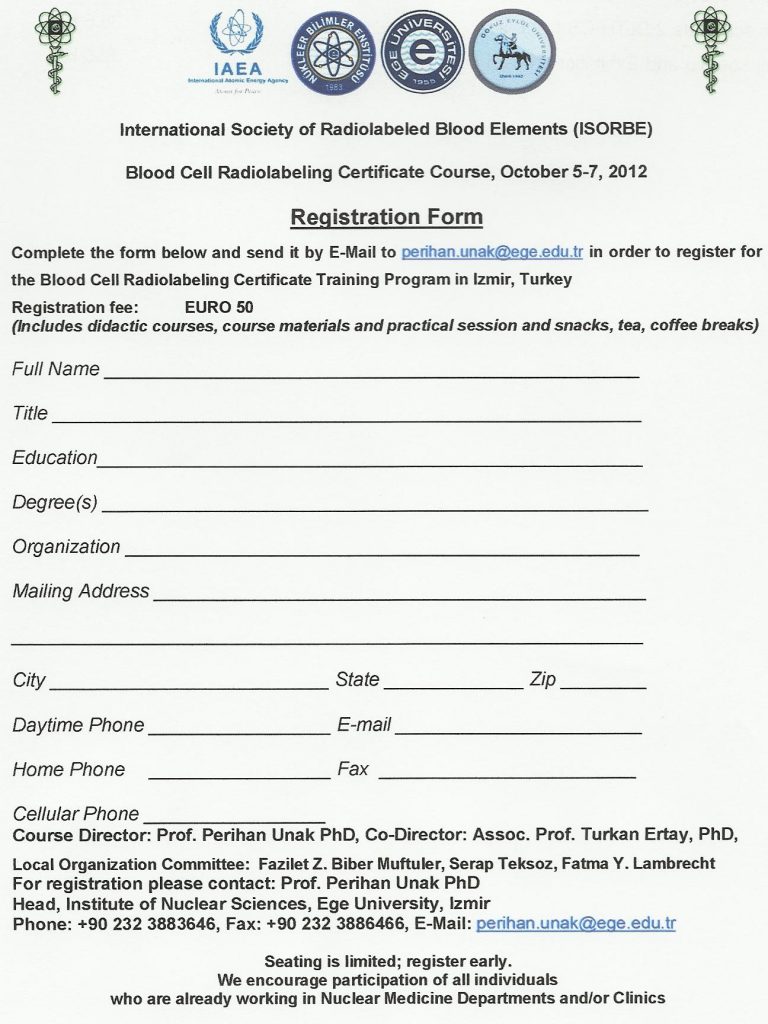
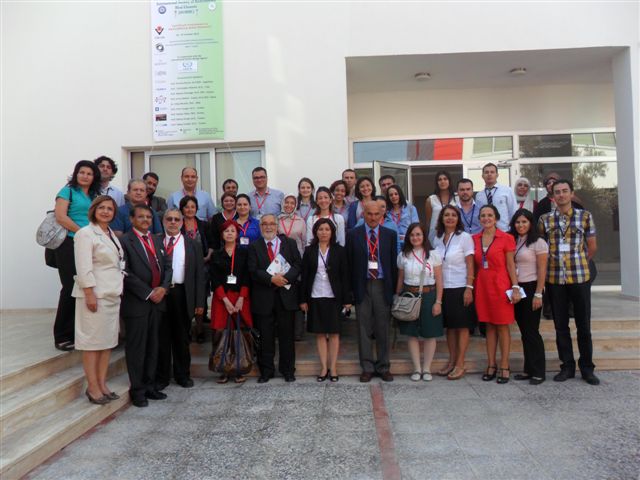
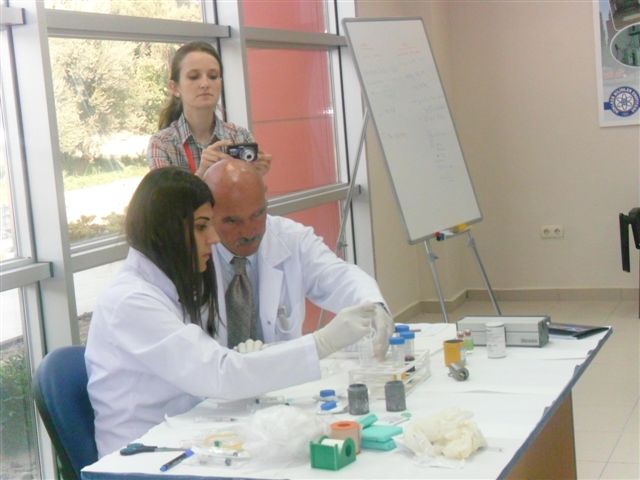
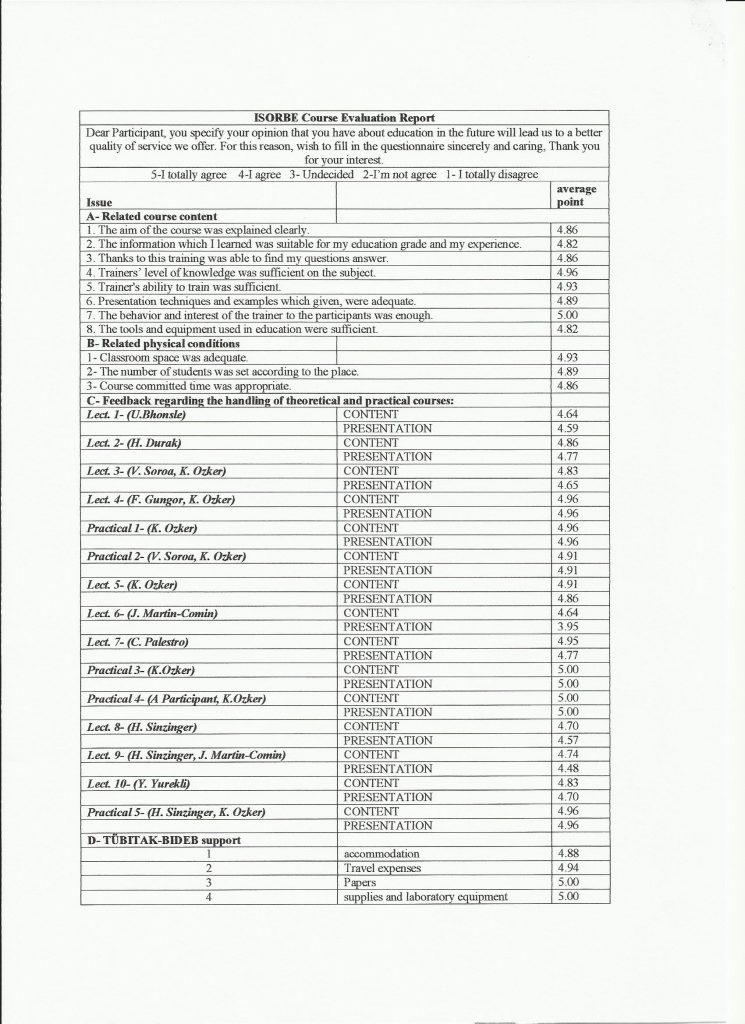
ALASBIMN Brazil 2011
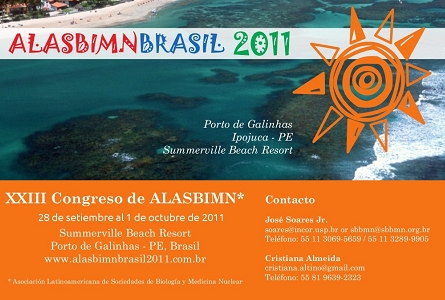
15th ISORBE Congress
The 15th ISORBE Congress was held in NIJMEGEN, The Netherlands from March 31 to April 2, 2011
Congress President: Wim OYEN, Radbound University Nijmegen, The Netherlands
Organisation: Wim OYEN and Otto BOERMAN
Lectures by: H. Balink, R. Bennink, M. Bernardo Filho, C. Bleeker-Rovers, O. Boerman, J. Buscombe, M. Chianelli, M. Gotthardt, Ruth Keijers, J. Martin-Comin, M. Netea, W. Oyen, K. Ozker, C. Palestro, N. Prandini, A. Signore, H. Sinzinger, S. Srivastava, Victoria Soroa, M. Thakur, F. Vos, Jolanda de Vries
Participants: Maryam Abu Jarwa, H. Alotaibi, Anne Arens, Marie Claire Attard, J. Baas, H. Balink, Christel Baudin, R. Bennink, M. Mernardo-Filho, Chantal Bleeker-Rovers, O. Boerman, Desiree Bos, W. Bouwman, W. van den Broek, W. van der Bruggen, J. Buscombe, J. Butter, M. Chianelli, L. Claessens-Joost, Sandra Dahm, D. van Dijk, Ingrid Dijkgraaf, J. Disselhorst, Marielle Eikhof, G. Franssen, F. Gemmel, E. Geven, A. Glaudemans, G. Gonzales, M. Gotthardt, P. de Haas, F. Hajos, P. Hebels, Sandra Heskamp, Hana Hourani, A.W.L.C. Huiskes, M. Janssen, Ilse Janssen, Ruth Keijsers, Hilda Kleibergen, J. de Klerk, P. Kok, V. Kumar, M. Larikka, P. Laverman, Susanne Luttje, Julie Martin, J. Martin-Comin, J. Molkenboer, M. Netea, A. Oostdijk, W. Oyen, K. Özker, C. Palestro, H. van der Pol, R. Point. J.W. Postema, N. Prandini, Ruud Ramakers, M. van Riel, A. Signore, H. Sinzinger, F. Sivro, Grazyna Sobal, Victoria Soroa, S. Srivastava, Georga Stamatia, C. Stevens, M. Thakur, Eva Trifina, D. Valk, M. van de Ven, Annibale Versari, F. Vos, Jolanda de Vries, Edith Wesselink, T. Wetzels, A. Xing, M. Zuijdwijk
Congress website: http://www.umcn.nl/isorbe
2nd Blood Cell Radiolabeling Certificate Course
ANTALYA, Turkey, March 27 – 29, 2011
Venue: Akdeniz University Guest House, Antalya, Turkey
Organisation: Firat GÜNGÖR, Akadeniz University Antalya, Turkey,
ISORBE Education Committee: Victoria Soroa, Josep Martin-Comin, Kutlan Özker, Christopher Palestro, Alberto Signore, Helmut Sinzinger
Entry requirements: B.Sc. degree majored in Nuclear Medicine Technology or in one of the Natural Sciences. Priority will be given to the candidates who have experience in the field.
Open or closed systems for the labeling of cells?
Aseptic procedures should be used during blood cell isolation and labeling. To achieve this aim several closed systems have been developed in the past years.
Laboratory requirements: vary from country to country but they follow similar regulations as for the preparation of radioactive kits for clinical nuclear medicine. Unless a closed system is used, the laboratory should have defined specifications for cleanness, laminar airflow, particulate and microbiological contamination.
Victoria Soroa, President
- Course schedule for ISORBE certificate program on radiolabeling of blood cells:
| DAY 1 | DAY 2 | DAY 3 |
| Lect. 1- General introduction to course
9:00-10:00 (V. Soroa)
Lect. 2– Radiolabeling of red blood cells (in vivo, in vi-vitro, in vitro) 10:00-11:00 (V. Soroa, K. Ozker)
Lect. 3- Radiolabeling of white blood cells with In-oxine and Tc-99m-HMPAO 11:30-12:30 (F. Gungor, K. Ozker) |
Lect. 4- Operation of a cell labeling facility, basic aspects, design of facilities, environmental controls, records.
9:00-10:00 (F. Gungor, K. Ozker)
Lect. 5– Infection and inflammation imaging (soft tissue) 10:00-11:00 (J. Martin-Comin)
Lect. 6– Infection and inflammation imaging (bone) 11:30-12:30 (J. Martin-Comin) |
Lect. 7- Radiolabeling of platelets with In-111 oxine and Tc-99m- HMPAO
9:00-10:00 (H. Sinzinger)
Lect. 8– Platelet dynamics, physiological aspects and pharmacokinetics. Clinical applications of radiolabeled platelets. 10:30-12:00 (H. Sinzinger) |
| Practical 1:
Radiolabeling of white blood cells with In-111 oxine 14:00-16:00 (F. Gungor, K. Ozker) Practical 2: Radiolabeling of red blood cells with Tc-99m 16:30-17:30 (V. Soroa, K. Ozker) |
Practical 3:
Radiolabeling of white blood cells with Tc-99m-HMPAO 14:00-16:00 (F. Gungor, K.Ozker)
|
Practical 4:
Radiolabeling of platelets with In-111 oxine and Tc-99m-HMPAO 14:00-17:30 (H. Sinzinger) |
2nd Blood Cell Radiolabeling Certificate Course – Report
Akdeniz University, Turkey 27- 29 March 2011
- There was an ISORBE consensus statement about the minimum requirements necessary for a cell labeling facility and minimum requirements for the training of staff. [Eur J Nucl Med Mol Imaging (2009) 36:1351-1352]. Training on the radiolabeling of blood elements is directly related to the safety of patients as well as workers. The first training program was organized in Dubai by the Dubai Health Authority and ISORBE in 2009.
- This second course was organized by ISORBE and Akdeniz University Department of Nuclear Medicine, Antalya, Turkey.
- ISORBE Education Committee was: Victoria Soroa, Helmut Sinzinger, Firat Güngör, Christopher Palestro, Josep Martin-Comin, Kutlan Özker. The Director of the 2nd Blood Cell Radiolabeling Certificate Course was Professor Firat Güngör.
- The course was attended by 21 fully registered participants from Turkey, 1 from Kuwait and 1 from Iran. There was a registration fee of 50 Euros which covered the attendance in didactic and practical sessions, coffee breaks, lunch and dinner for 3 days during the course.
- The course contained theoretical and practical sessions (a copy of the Scientific Program is attached).
- In the practical sessions erythrocytes, leukocytes and platelets radiolabeling were demonstrated using updated standard ISORBE procedures. Leukocytes radiolabeling resulted in 78% and 94% efficiency using Tc-99m HMPAO and In-111 oxine respectively, while platelets radiolabeling using In-111 oxine gave 97%. HMPAO kits and In-111 oxine were gifts to the ISORBE Certificate Course respectively from Medi-Radiopharma, Hungary and Covidien.
- It was also required that further practical work to be carried out at the workplace of individual participant as implementation of what have been learned during the course. The period of this on the job training was estimated to be about 3 months under the supervision of a tutor accepted by ISORBE. A total of 15 leukocyte labeling, 15 erythrocyte labeling and 5 platelet labeling (optional) were required from each participant in order to award the ISORBE Certificate for Radiolabeling of Blood Cells.
- The course has been evaluated by the participants during a round table discussion on the last day of the program. The participants expressed that the course was very helpful to them and the aim of the course was completely fulfilled by 3 working days of didactic class room hours in the mornings and practical in the afternoons. The participants in general found a good communication link with the faculty and required to be involved in the practical sessions rather than only observing the procedures.
- More interactive programs will be implemented in the coming years. Updating and planning these training programs globally at different regions in the radiolabeling of blood cells will result in improved patient care and safety.
- Özker
-
SPONSORS: MNT, Turkey; RADMED, Turkey; NEPHA, Turkey, Eczacibasi-Montrol, Turkey; Medicheck, Turkey; Medi-Radiopharma, Hungary; Covidien, The Netherlands.
HMPAO kits are gifts from Medi-Radiopharma, In-111 is a gift from Covidien.
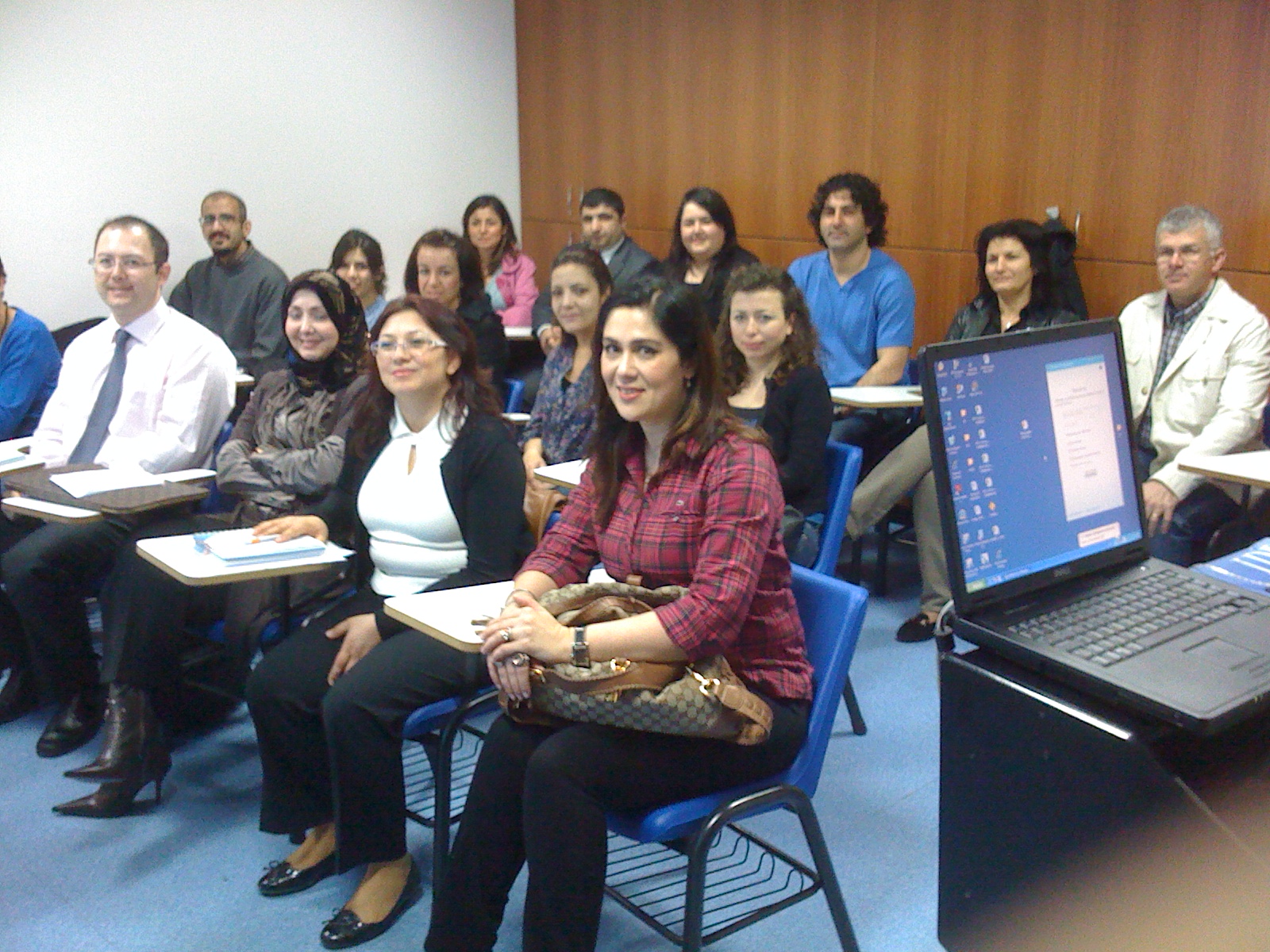
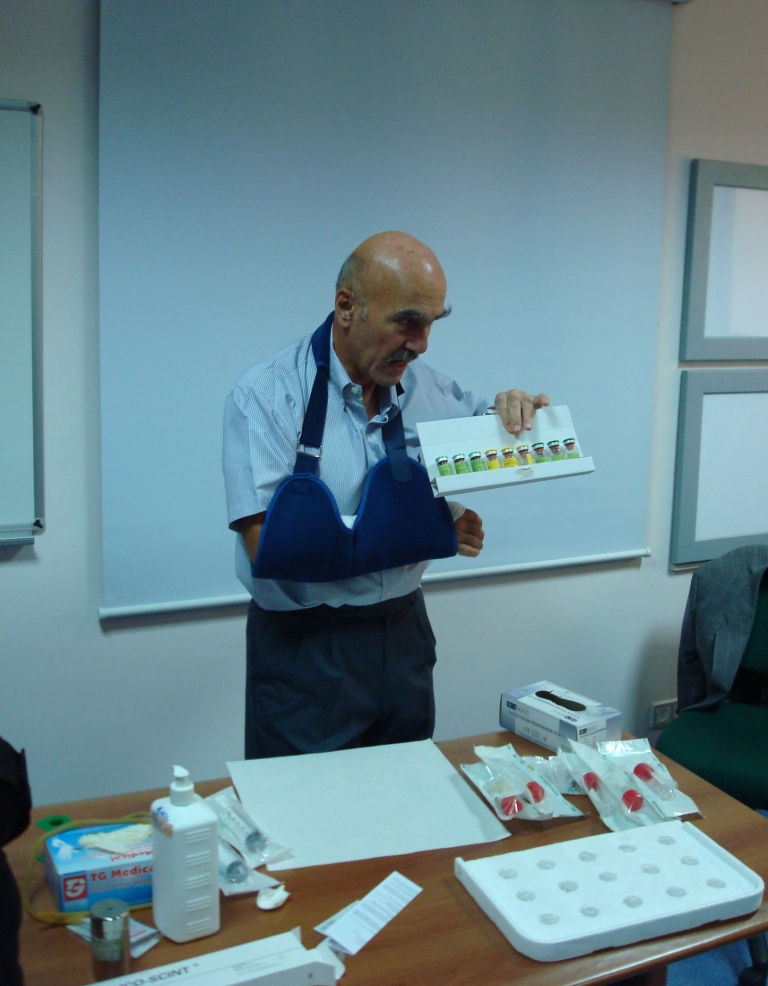
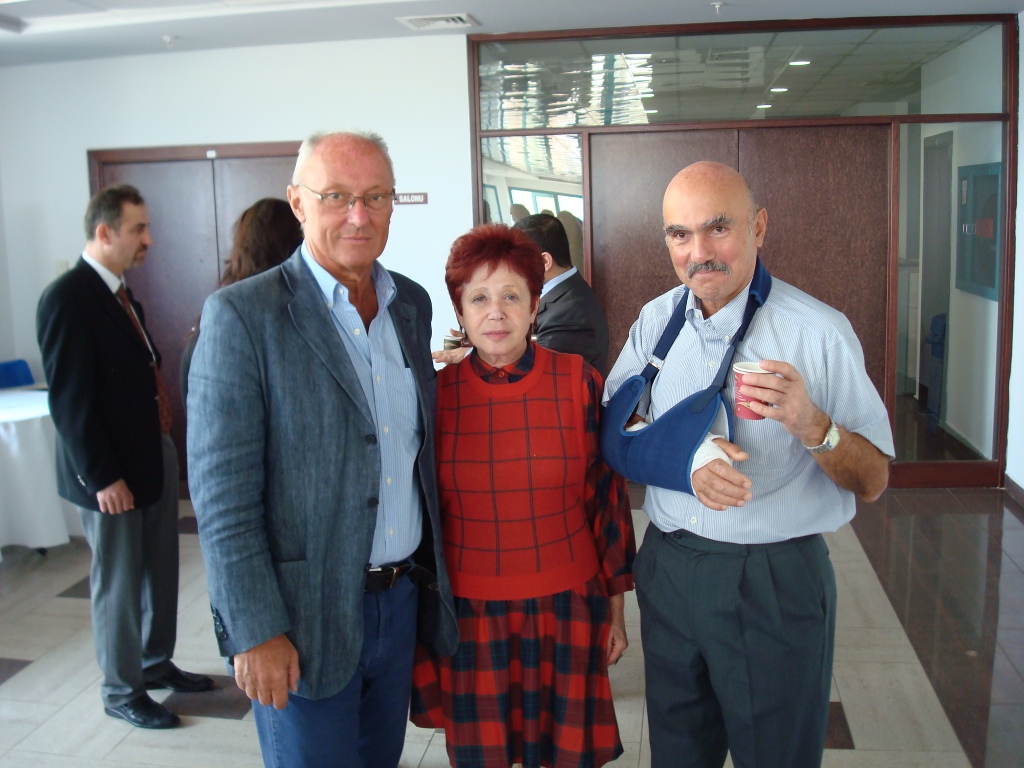
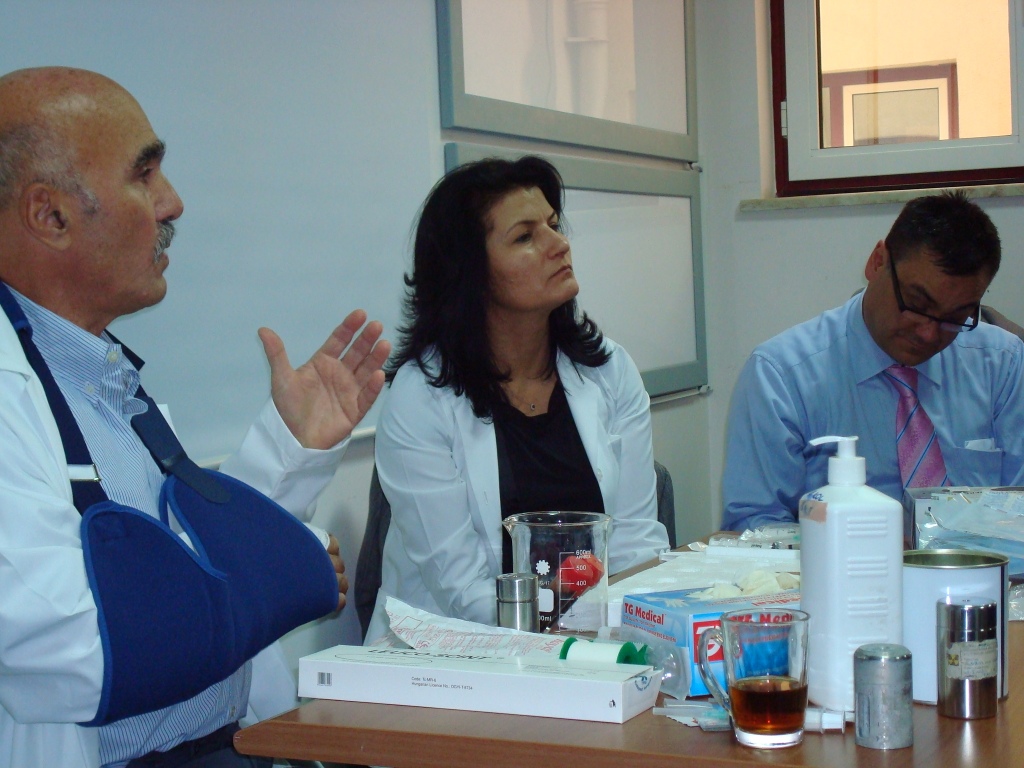
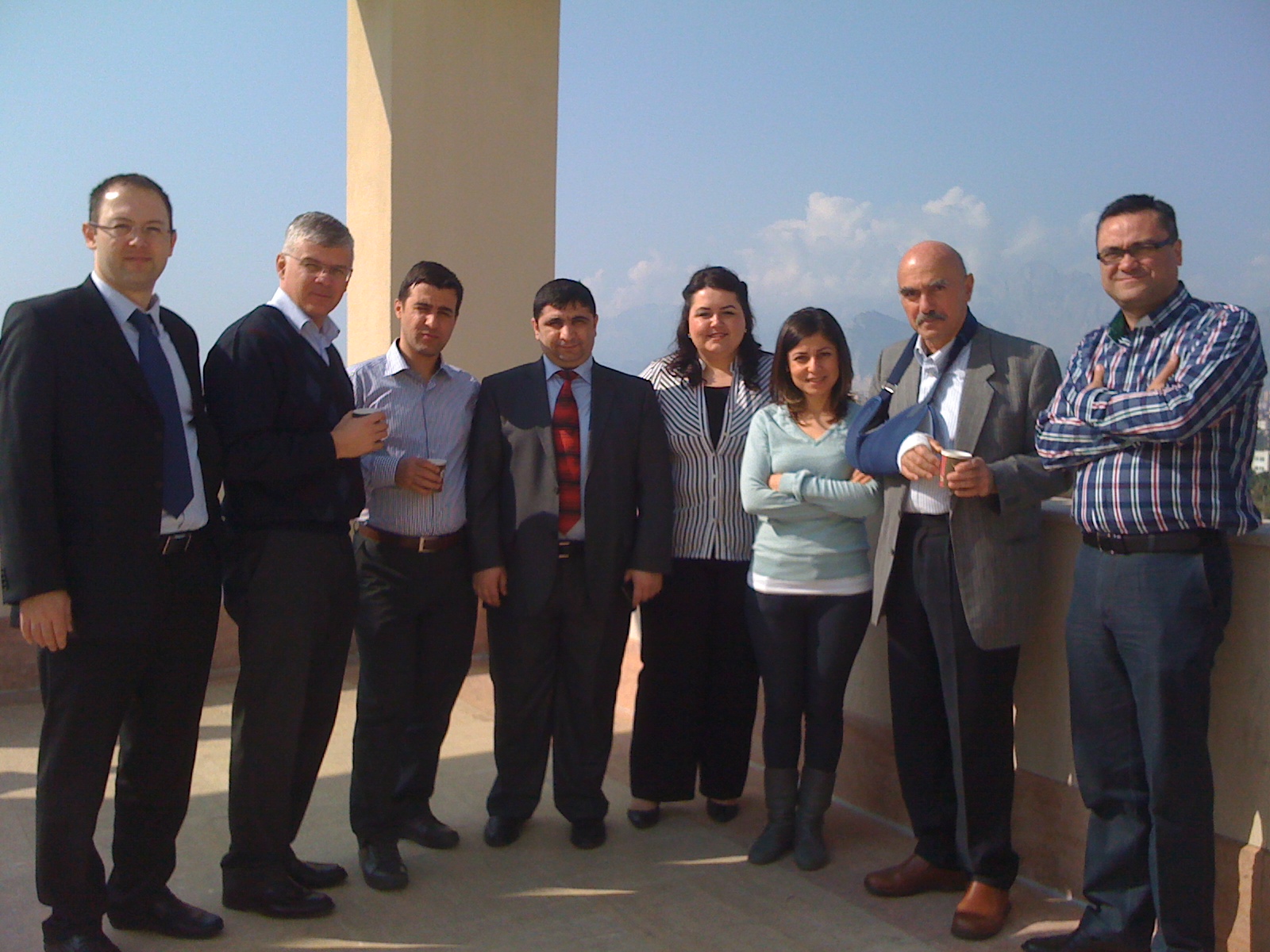
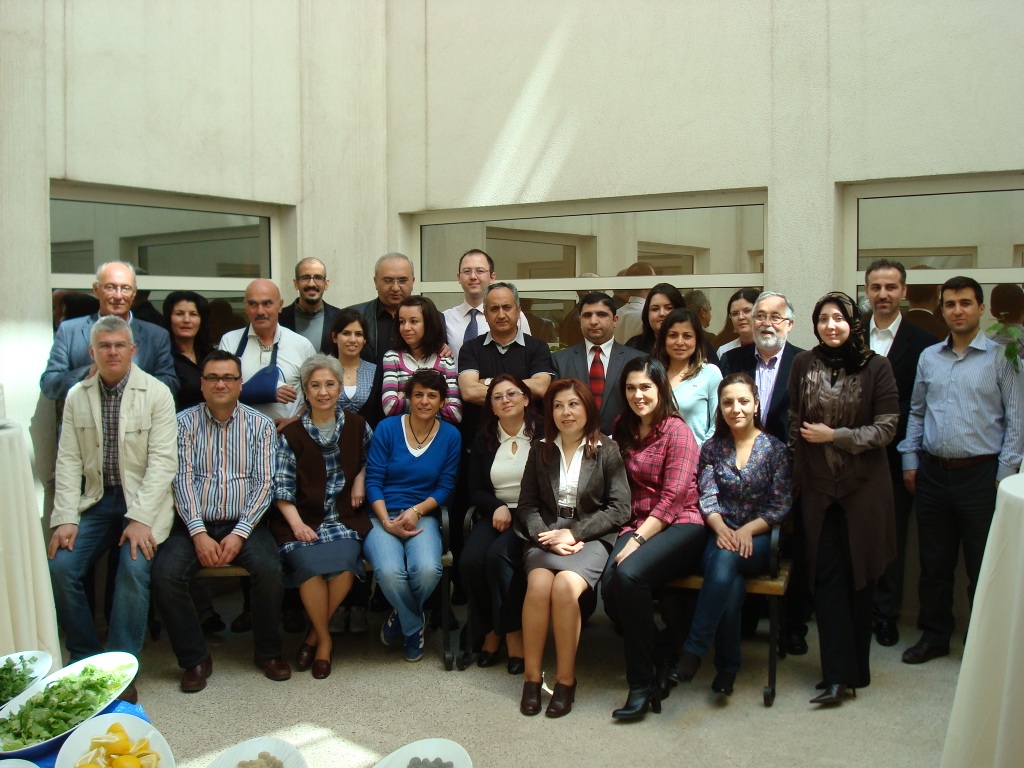
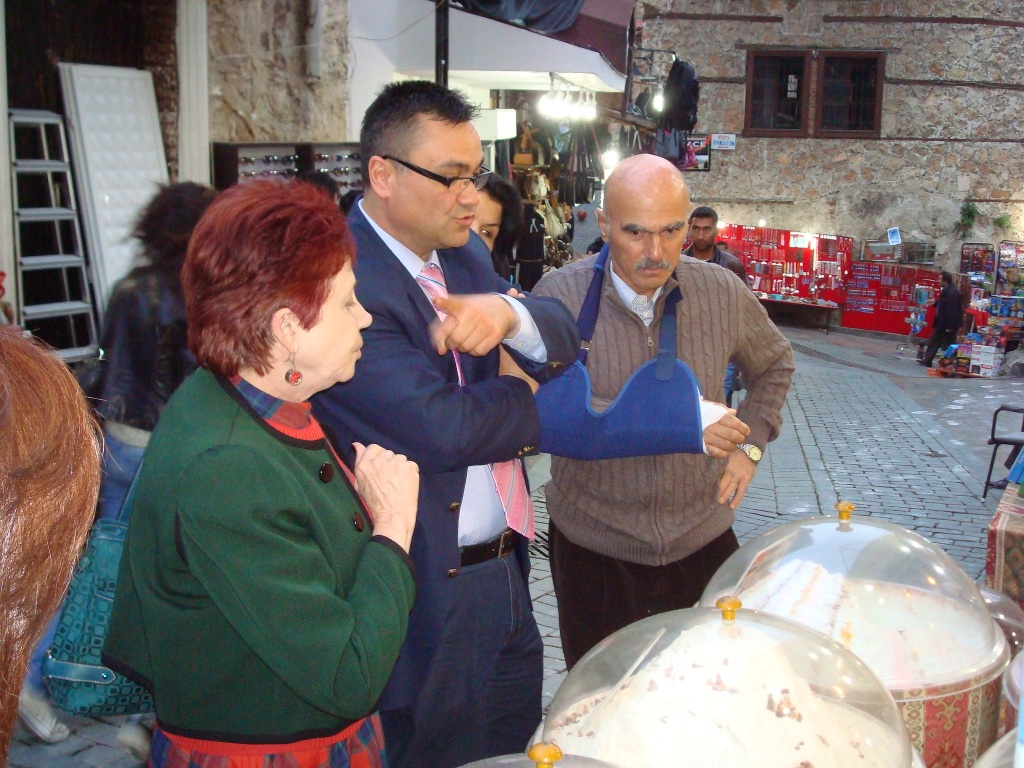
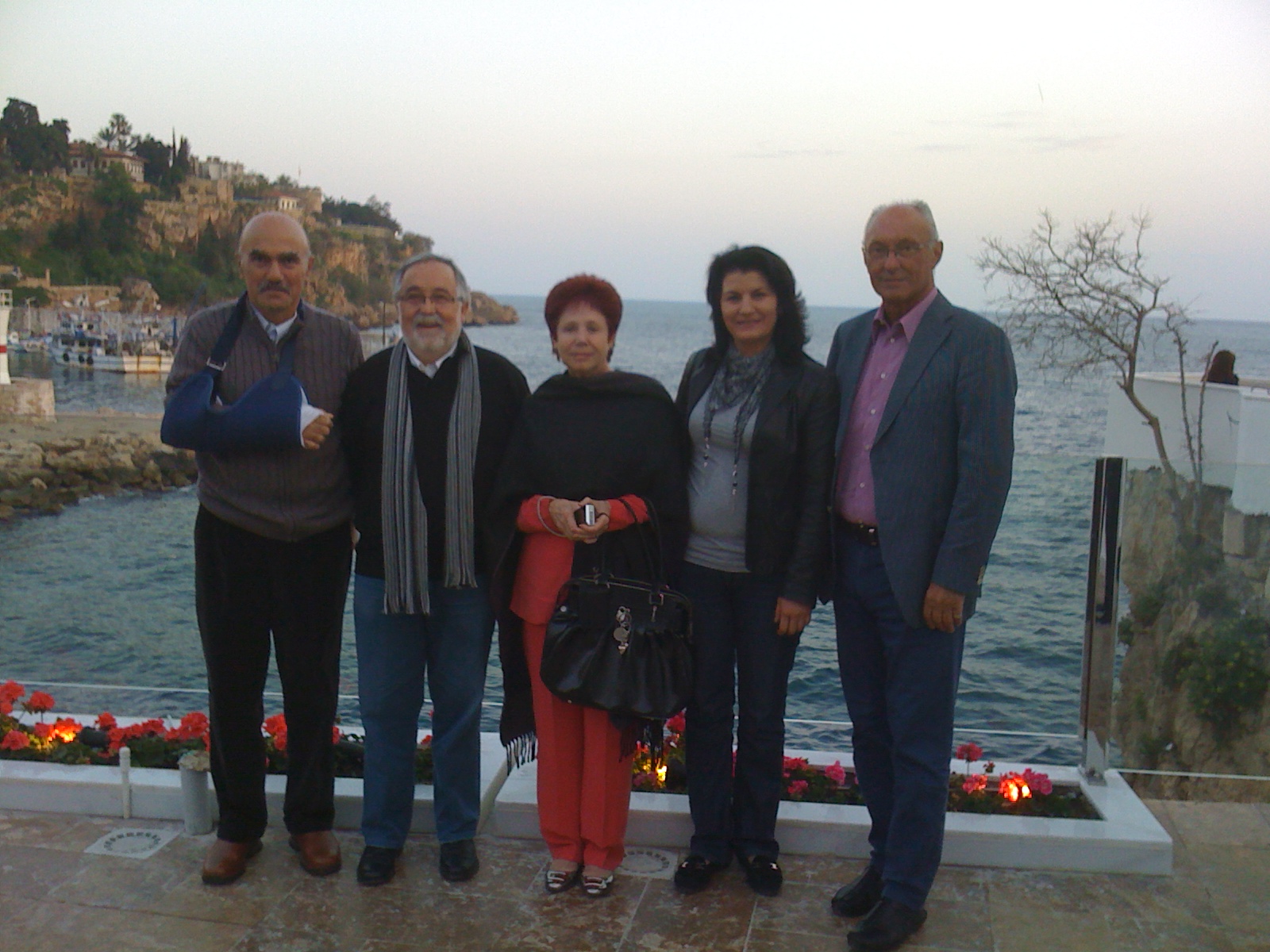
ISORBE Meeting Dinner at the EANM Conference, Vienna, Austria, Oct. 12th, 2010
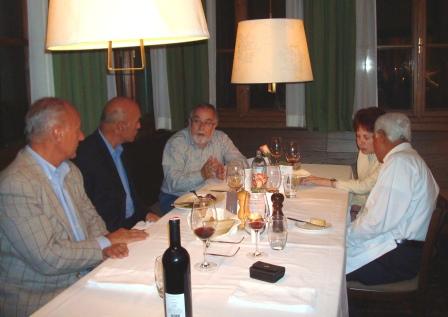
ISORBE Plenary and CME Session at the WFNMB Congress
CAPE TOWN, South Africa, September 21 – 22, 2010
„Inflammation & Infection“
Chair: Victoria SOROA, Mathew THAKUR
Lectures by: C. Palestro, V. Kumar, S. Srivastava, E. Lazzeri, A. Signore, M. Thakur, M. Sathekge, J. Buscombe, J. Martin-Comin, H. Sinzinger

The 10th World Federation of Nuclear Medicine & Biology Congress took place in Cape Town, South Africa from September 18 – 23, 2010. The WFNMB congress 2010 provided attendees with up-to-date information in Nuclear Medicine, as well as an opportunity to interact with Nuclear Medicine experts from around the world. ISORBE was given the responsibility for organizing plenary and continuing education sessions on infection and inflammation that were offered during the Congress. World renowned experts lectured on musculoskeletal and soft tissue infections, AIDS, the role of SPECT/CT and PET/CT in infection and inflammation, and new agents under investigation.
CME Session I
Tuesday September 21, 2010 (16:15-17:45)
Inflammation & Infection : AIDS, Mycobacterial, Vascular and FUO
Moderator:Christopher J. Palestro Co-Moderator: Alberto Signore
1. Nuclear Medicine & AIDS (30 min) (M. Sathekge)
2. Granulomatous Diseases (Mycobacterial infections & Sarcoid) (20 min) (J. Buscombe)
3. Prosthetic Vascular Graft Infection (20 min) (J. Martin-Comin)
4. Fever of Unknown Origin (20 min) (J. Buscombe)
CME Session II
Wednesday September 22, 2010 (8:00- 9:30)
Inflammation & Infection : Osteomyelitis, IBD and Atherosclerosis
Moderator: Josep Martin-Comin Co-Moderator: Helmut Sinzinger
1. Prosthetic Joint Infection (20 min) (C. J. Palestro)
2. Diabetic Foot Infection (20 min) (A. Signore)
3. Inflammatory Bowel Disease (20 min) (J. Martin-Comin)
4. Atherosclerosis (30 min) (H. Sinzinger)
Plenary Session
Wednesday September 22, 2010 (10:00 -11:30)
Inflammation & Infection : Novel Agents and Applications
Moderator: Victoria Soroa Co-Moderator: Mathew Thakur
1. Positron Emitters for Labeling Leukocytes (C. J. Palestro)
2. Gallium 68 (V. Kumar)
3. Molecular Imaging and Therapy of Inflammatory Atheromatous Disease (S. Srivastava)
4. Radiolabeled Vitamins (E. Lazzeri)
5. Molecular Imaging of Autoimmune Diseases (A. Signore)
6. Neutrophil Trafficking (C. J. Palestro)
7. Radiolabeled Stem Cells (M. Thakur)
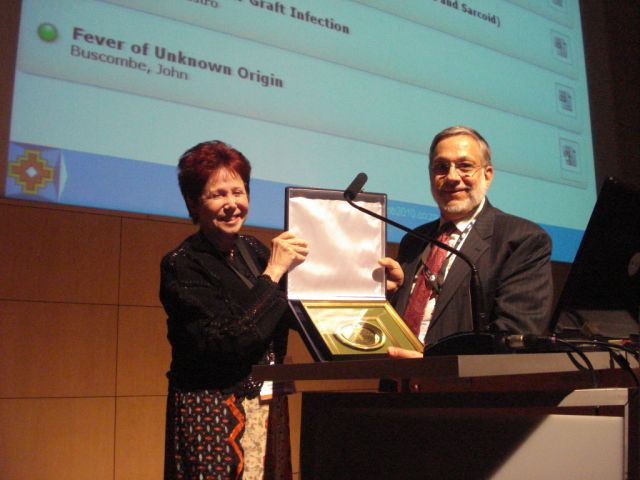
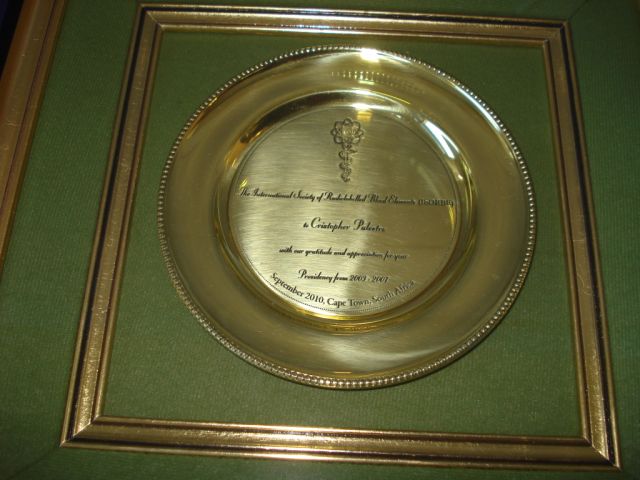
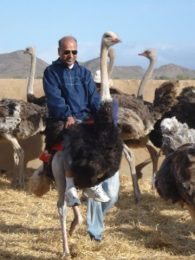
1st ISORBE Blood Cells Radiolabeling Certificate Course
DUBAI, UAE, November 17 – 19, 2009
Program Chair: Kutlan ÖZKER, Program Co-Chair: Victoria SOROA
ISORBE Education Committee: Victoria SOROA, Josep MARTIN-COMIN, Kutlan ÖZKER, Christopher PALESTRO, Alberto SIGNORE, Helmut SINZINGER
IAEA Educational committee: Natesan RAMAMOORTHY
Country Coordinator: Jamila ALSUWAIDI, Assistant Coordinator: Sara BU HUMAID
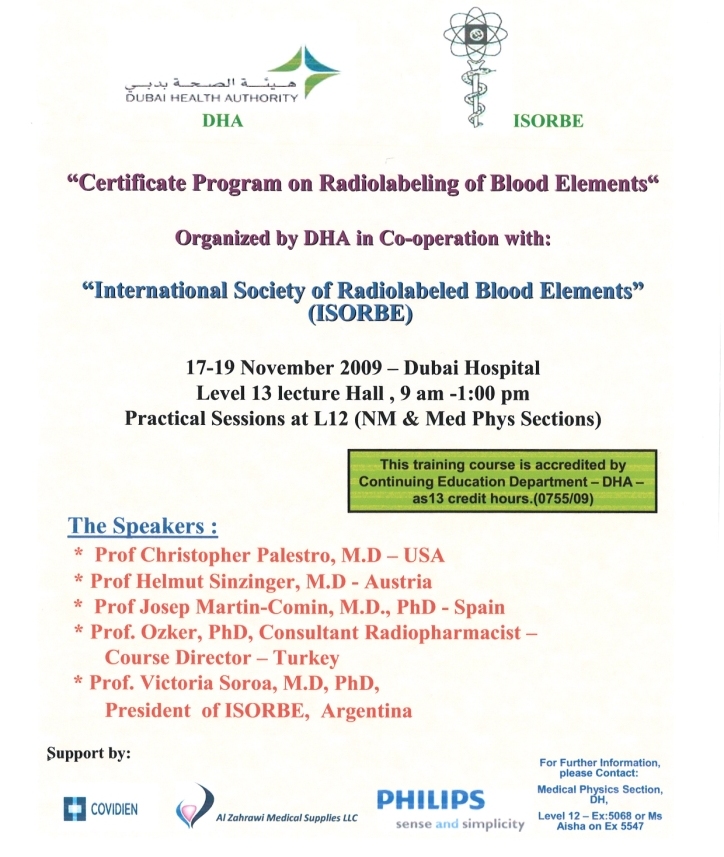
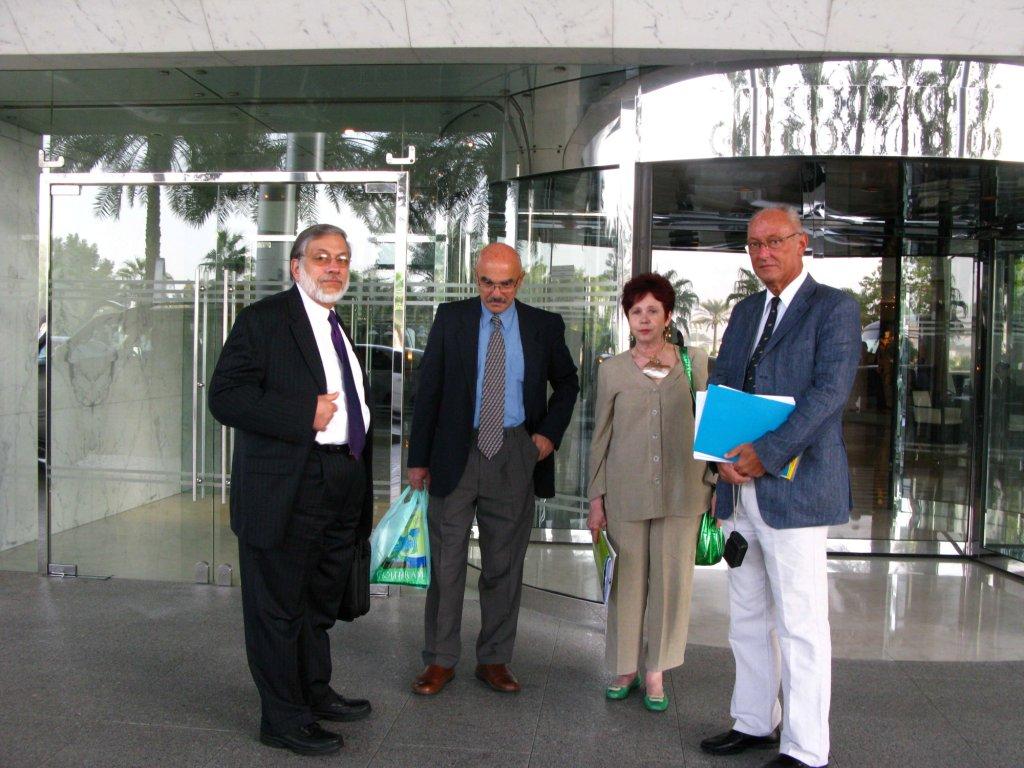
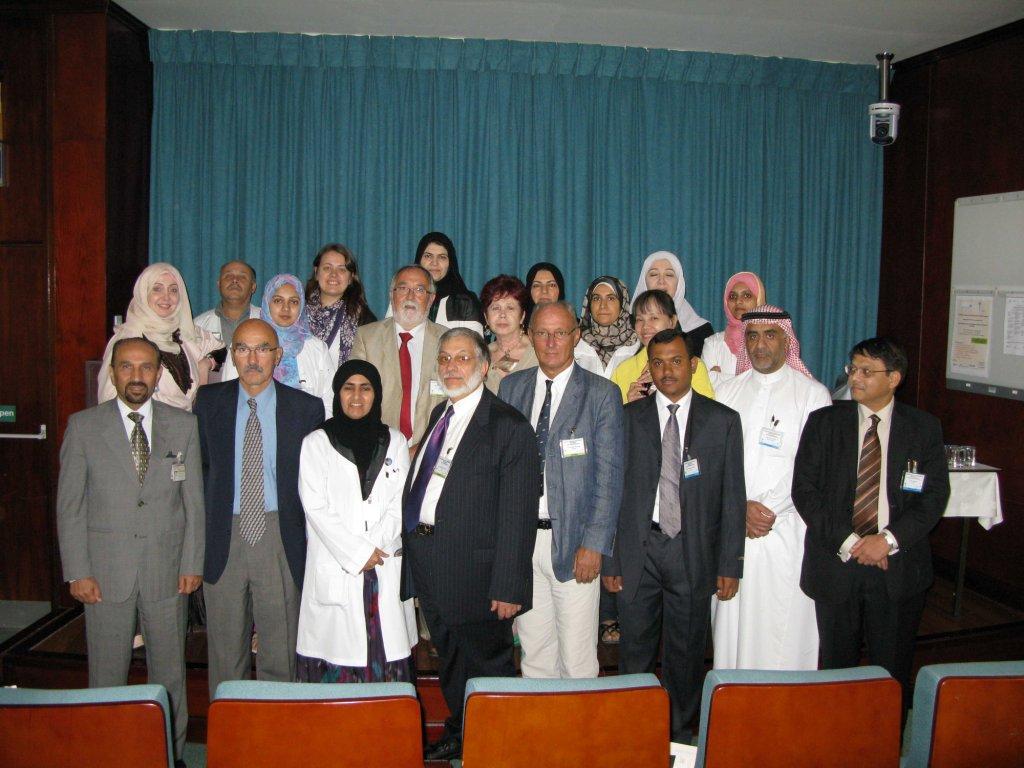
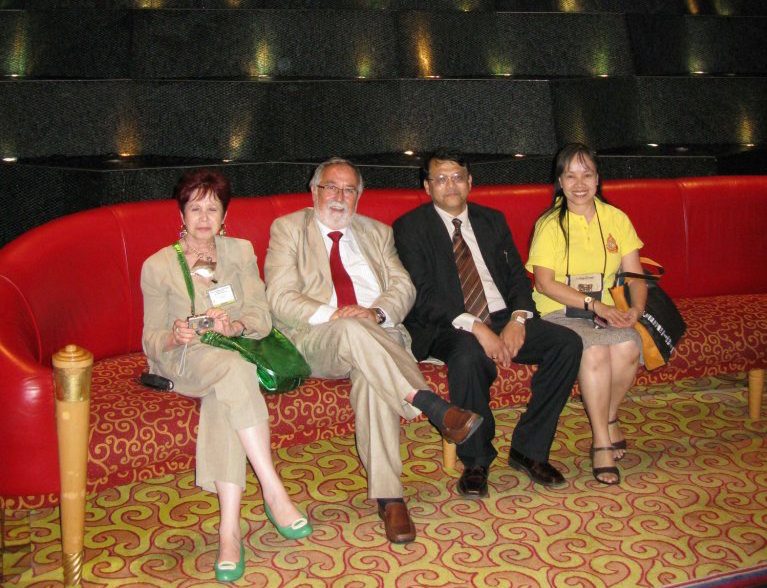
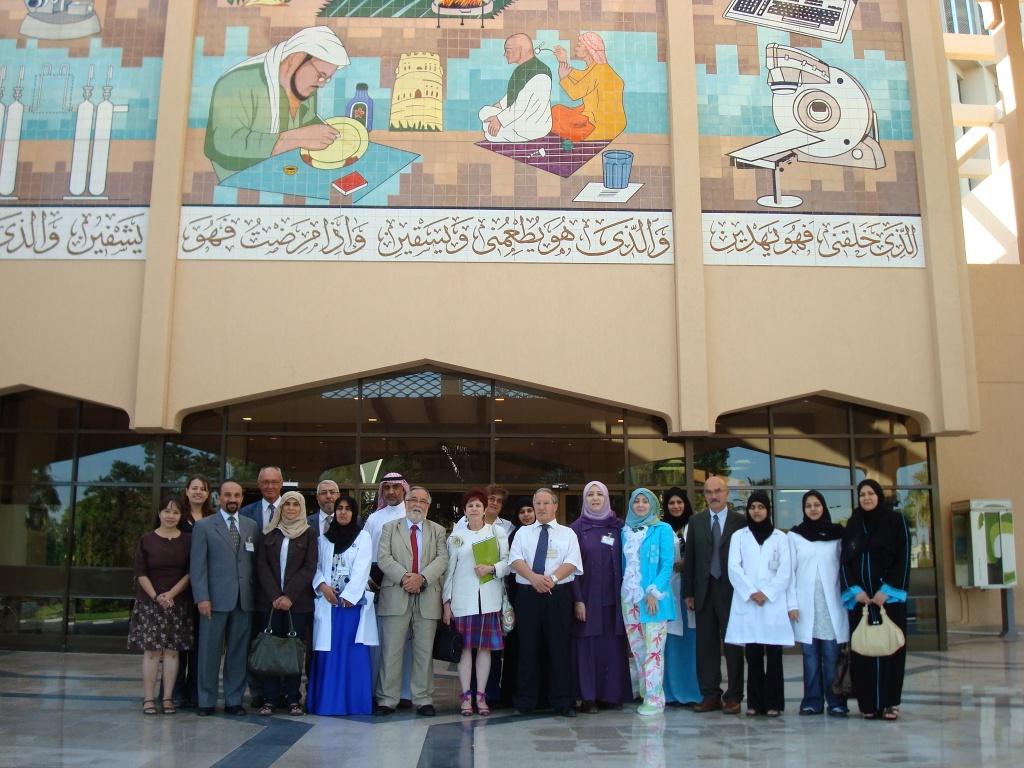
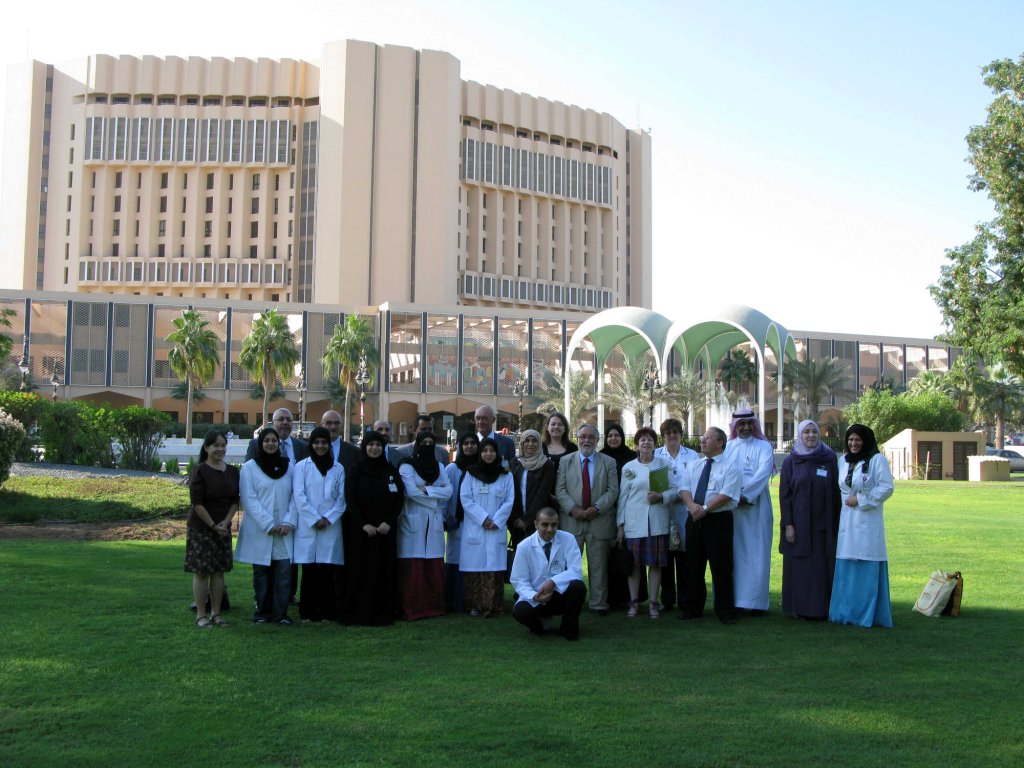
1st ISORBE Training Course, Dubai 2009 – Report
1. During the 14th Congress of the ISORBE which took place 26-28 March, 2009 in Antalya, Turkey, there was an international panel discussion on “Update on Design, Requirements and Regulations of a Radiopharmacy Facility in Relation to a Cell Labeling Facility” That session was the genesis of a consensus statement about the minimum requirements necessary for a cell labeling facility and minimum requirements for the training of staff. [Eur J Nucl Med Mol Imaging (2009) 36:1351-1352].
2. The course was organized by ISORBE and Dubai Health Authority–Dubai Hospital. This is the first certificate course organized by ISORBE.
3. ISORBE Education Committee was: Victoria Soroa, Helmut Sinzinger, Natesan Ramamoorthy, Christopher Palestro, Josep Martin-Comin, Kutlan Ozker. The Director of the 2009 Blood Cell Radiolabeling Certificate Course was Kutlan Ozker, the Local Coordinator was Jamila S AlSuwaidi and the Course Local Assistance was Sara Buhumaid.
4. The aim of the course was to train physicians and graduates of natural sciences or nuclear medicine technology who wish to work with radiolabeled blood elements. Priority was given to the candidates who are working in Nuclear Medicine Centers. The course was attended by 16 fully registered participants from 6 different countries. In addition there were many attendees from Dubai Hospital (physicians, pharmacists and technologists) and other local institutions for the didactic sessions.
5. The course was accredited by the Continuing Education Department of Dubai Health Authority as 13 Credit Hours (0755/09).
6. The course contained theoretical and practical sessions (a copy of the Scientific Program is attached).
7. It was also required that further practical work to be carried out at the workplace of individual participant as implementation of what have been learned during the course. The period of this on the job training was estimated to be about 3 months under the supervision of a tutor accepted by ISORBE. A total of 15 leukocyte labeling, 15 erythrocyte labeling and 5 platelet labeling (optional) were required from each participant in order to award the ISORBE Certificate for Radiolabeling of Blood Cells.
8. An evaluation of the course has been done during a round table discussion with all participants and the faculty. The participants expressed that the course was very helpful to them and showed a very high level of interest. The aim of the course was completely fulfilled by 3 working days of didactic class room hours in the mornings and practical in the afternoons. The participants found the link between the lectures and the practicals very helpful, and expressed in their words that there was an excellent communication between the participants and the faculty. Some participants required more practicals which will be implemented in the coming years.
Recommendations:
1. To run this type of the courses on a yearly bases at different regions.
2. To announce the course timely over the Americas, Africa, Europe and Asia to encourage participation from each region.
3. To have registration fees for the course. It was free of charge for the first year.
4. To have the cooperation of International Atomic Energy Agency for supporting participants from countries with limited financial resources.
5. Training on the radiolabeling of blood elements is directly related to the quality and safety of patients as well as safety measures to the workers. Updated training programs in this field will result in improved patient care and safety.
On the Job Training Feedback from Dubai Hospital WBC Radiolabeling:
| No. | Date | done by | Kit | %Labeling Efficiency | Supervisor |
|---|---|---|---|---|---|
| 1 | 23-11-09 | Mrs. Zainab | BrainSpect HMPAO | 78.9% | Prof.Ozker |
| 2 | 24-11-09 | Ms. Najlaa | LeucoScint HMPAO | 64.5% | Prof.Ozker |
| 3 | 25-11-09 | Mrs. Zainab | BrainSpect HMPAO | 61.2% | Prof.Ozker |
| 4 | 6-12-09 | Ms. Najlaa | LeucoScint HMPAO | 82.3% | Prof.Ozker |
| 5 | 7-12-09 | Mrs. Zainab | LeucoScint HMPAO | 71% | Prof.Ozker |
| 6 | 8-12-09 | Ms. Najlaa | BrainSpect HMPAO | 88.3% | Prof.Ozker |
| 7 | 9-12-09 | Mrs. Samera | LeucoScint HMPAO | 77.6% | Prof.Ozker |
| 8 | 29-12-09 | Mrs. Zainab | LeucoScint HMPAO | 77.3% | Dr.Suhaili |
| 9 | 30-12-09 | Ms. Najlaa | LeucoScint HMPAO | 81.4% | Dr.Suhaili |
| 10 | 7-01-10 | Mrs. Zainab | LeucoScint HMPAO | 70.2% | Dr.Suhaili |
| 11 | 14-01-10 | Ms. Najlaa | LeucoScint HMPAO | 81.8% | Dr.Suhaili |
| 12 | 21-01-10 | Mrs. Zainab | LeucoScint HMPAO | 66% | Dr.Suhaili |
| 13 | 11-02-10 | Ms. Najlaa | LeucoScint HMPAO | 81.4% | Dr.Suhaili |
| 14 | 18-02-10 | Mrs. Zainab | LeucoScint HMPAO | 75.3% | Dr.Suhaili |
| mean=75.5% |
The candidates who successfully completed the formal training and internship terms were awarded by ISORBE “Certificate on Radiolabeling of Blood Cells”.
SPONSORS: Dubai Health Authority; Covidien, The Netherlands; Medi-Radiopharma, Hungary; Al Zahrawi Medical Supplies LLC, Dubai.
HMPAO kits are gifts from Medi-Radiopharma, In-111 is a gift from Covidien.
ISORBE Plenary Session on Infection/Inflammation at the XXII ALASBIMN Congress
CARTAGENA, Colombia, November 6, 2009
„Molecular imaging atherosclerosis, thrombosis, inflammation, infection“
Organisation: Victoria SOROA
Chairmen: M. PABÓN, M. DEL HUERTO, O. VÉLEZ, A. LLAMAS
Lectures by: Victoria Soroa, J. Buscombe, S. Srivastava, K. Hazra, A. Llamas, J. Martin-Comin, N. Prandini, M. Thakur, H. Sinzinger, A. Signore

In Cartagena the Presidium anonymously elected Prof. Mathew THAKUR as the recipient of the first McAfee Medal
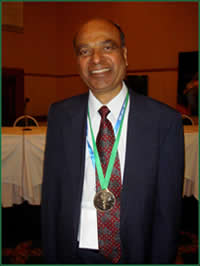
14th ISORBE Congress
ANTALYA, Turkey, March 26 – 28, 2009
Congress President: Firat GÜNGÖR
Scientific Committee: Hatice DURAK, Binnur KARAYALCIN, Josep MARTIN-COMIN, Wim OYEN, Kutlan ÖZKER, Christopher PALESTRO, Alberto SIGNORE, Helmut SINZINGER, Victoria SOROA, Mathew THAKUR, Mustafa ÜNLÜ
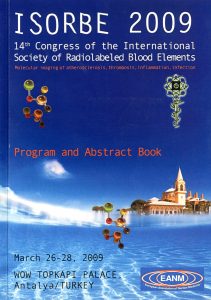
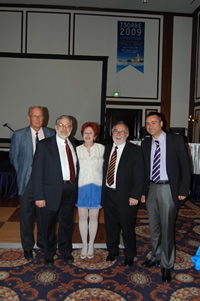
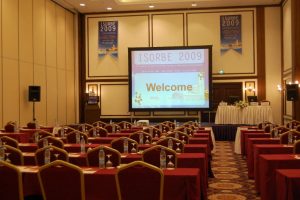
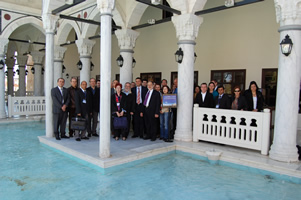
Nuclear Medicine Methods for the Study of Inflammatory Processes and Infection GRONINGEN, The Netherlands, May 22 – 23, 2008
Nuclear Medicine Methods for the Study of Inflammatory Processes and Infection
under the patronage of ISORBE
GRONINGEN, The Netherlands, May 22 – 23, 2008
Organisation and Scientific Committee: O.C. BOERMAN, Rajo DIERCKX, Wim J.G. OYEN, Alberto SIGNORE
Local Organizing Committee: A.M.J. Paans, J. Pruim, M.G.G. Sturkenboom, G.J. de Voogd, E.F.J. de Vries, A. van Waarde
Lectures by: O.C. Boerman, H.H. Boersma, J. Buscombe, M. Chianelli, R.A. Dierckx, J.J.A.M. van den Dungen, O. Israel, F. Jamar, E. Lazzeri, P.G.M. Maathuis, G. Malviya, J. Martin-Comin, J. Meller, W.J.G. Oyen, J. Pruim, M. Roca, A. Signore, H.G. Sprenger, E.F.J. de Vries, M.M. Welling, C. van de Wiele
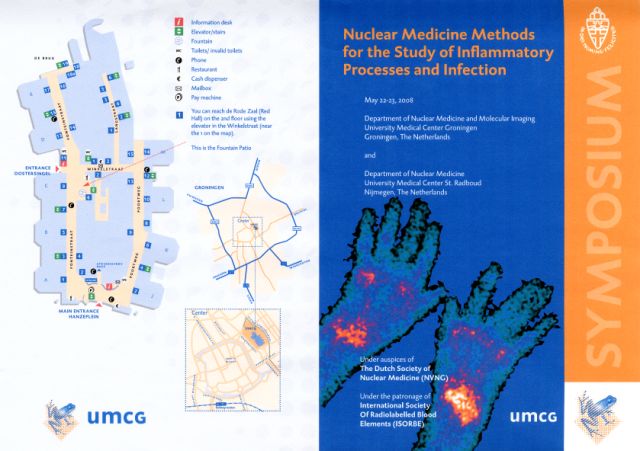
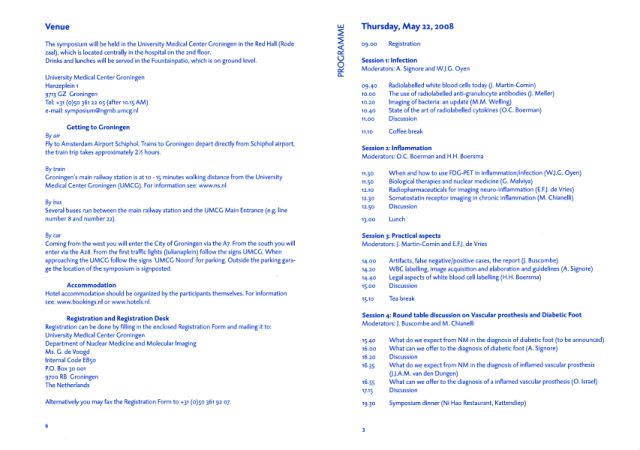
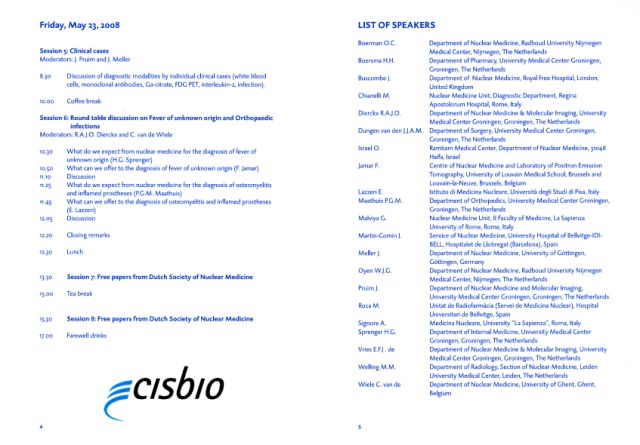
13th ISORBE Congress at the ALASBIMN Conference
SANTA CRUZ, Bolivia, December 1, 2007
Organisation: Victoria SOROA
Chairmen: Christopher PALESTRO, John BUSCOMBE, Kishor SOLANKI, Vivian PEREYRA, Silvia CASTIGLIA, Karina M. FERNANDEZ
Lectures by: C. Palestro, J. Martin-Comin, H. Sinzinger, J. Vilar, V. Kumar, K. Solanki, J.L. Crudo, J. Buscombe, Victoria Soroa, M. Thakur
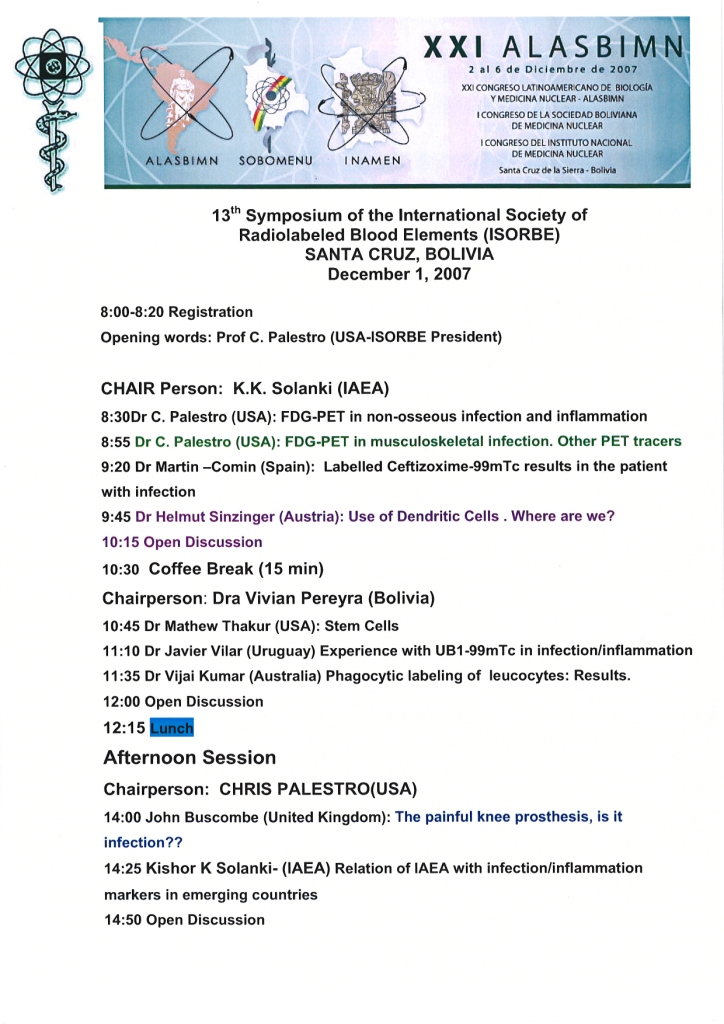
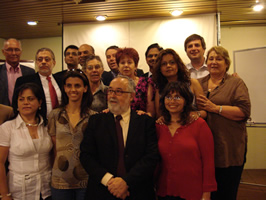
11th ISORBE Congress
COIMBRA, Portugal, April 11 – 12, 2003
Congress President: Joao Manuel PEDROSO DE LIMA
International Scientific Committee: Christopher PALESTRO, Alberto SIGNORE, Helmut SINZINGER, Mathew THAKUR
Organizing Committee: Margarida RODRIGUES, Ana FERRER-ANTUNES, Christina BAETA, Jorge ISIDORO, Janine CORREIA
Lectures by: J. Martin-Comin, W. Oyen, C. Palestro, J.M. Pedroso de Lima, A. Pestema, J. Prats, Margarida Rodrigues, S. Semedo, A. Signore, H. Sinzinger, Grazyna Sobal, K. Solanki, M. Thakur
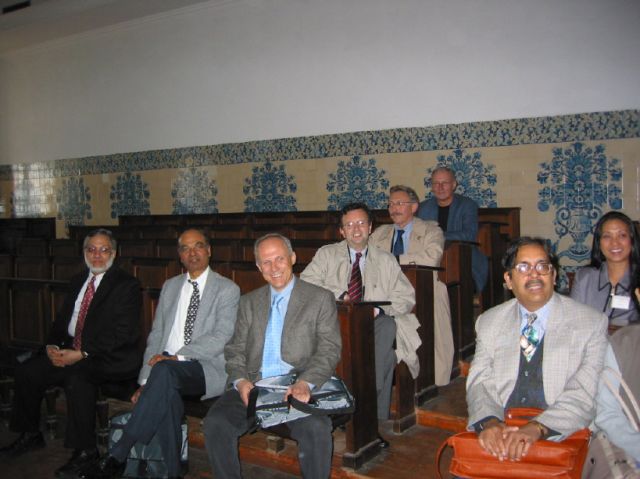
ISORBE Post-Congress Meeting WFNMB & ALASBIMN Congress
SANTIAGO, Chile, October 5, 2002
„ISORBE, on infection, inflammation & thrombosis“
Organisation: Mathew THAKUR, Margarida RODRIGUES
Chairmen: Alberto SIGNORE, Vikram LELE, Daya Kishore HAZRA, Christopher PALESTRO
This symposium in Chile was dedicated to Prof. Wolfgang BECKER, the Past President of ISORBE (1997 – 1999), who passed away on May 18th, 2002. His contributions to the field of imaging infection/inflammation and to ISORBE were extensive.
The History of Blood Cell Labeling 1976 – 2001

It was then Mathew Thakur’s turn to go on sabbatical (June 1975 – May 1976) to Dr. Michael Welch’s group at Mallinckrodt Institute of Radiology (MIR), Washington University, St. Louis. There he choose to work with In-111-oxine which appeared to be a most promising agent. It was in St. Louis where the first abscess images in dogs were obtained. Furthermore, platelets have been labeled as well with In-111-oxine and experimental deep venous thrombosis was detected by scintigraphy. The facility was excellent and the cooperation of Drs. R.E. Coleman, M.J. Welch and their colleagues was outstanding. „It turned out to be the most exciting and highly successful year of my career. Every experiment I did at St. Louis was successful. I wish this could happen all the time,“ recalls Mathew Thakur.
The hard work resulted in some important publications as for instance Indium-111 labeled platelets: Studies on preparation and evaluation of in vitro and in vivo function from the authors M.L. Thakur, M.J. Welch, H. Joist and R. E. Coleman published in Thromb. Res.4, 345-357 in 1976, or Indium -111- labeled leukocytes for the localization of abscesses: preparation, analysis, tissue distribution, and comparison with Gallium-67-citrate in dogs from M.L. Thakur, RE. Coleman and M.J. Welch, published in the Journal of Laboratory and Clinical Medicine, 89: 217 – 228 in 1977.
Dr. Thakur then went back to Hammersmith and worked with Professor Ford at the University of Manchester and labeled lymphocytes with In-111-oxine. At Hammersmith, using In-111-oxine labeled WBC, he worked with Dr. J.P. Lavender and by the end of 1976 they studied 20 patients with known abscesses or with fever of unknown origin. Using In-111 labeled lymphocytes they also studied a few patients with Hodgkin’s disease. The results have been published in the British Medical Journal (2: 797-799, 1977) by the authors J.P. Lavender, J.M. Goldman, R.N. Arnot and M.L. Thakur under the title Kinetics of Indium-111 labelled lymphocytes in normal subjects and patients with Hodgkin’s disease.
In February 1977 Mathew took a position with Dr. Alexander Gottschalk in the Department of Radiology at Yale University School of Medicine and worked with a cardiologist, Drs. B. Zaret and A. Riba, demonstrating the application of In-111 labeled platelets in detecting experimental bacterial endocarditis and coronary artery thrombosis. Twenty patients with known myocardial infarction were also studied with In-111-WBC and infarcted myocardium was successfully delineated. Imaging experimental infective endocarditis with Indium-lll-labeled blood cellular components (Circulation 59: 336-343, 1979) and Imaging experimental coronary artery thrombosis with Indium-111 platelets (Circulation 60: 767-775, 1979) from the authors A.L. Riba, M.L. Thakur, A. Gottschalk, V.T. Andriole and B.L. Zaret are publications from this period.
By this time, the Diagnostic Isotopes had already begun to produce In-111-oxine for limited supply within the USA. Supported by Diagnostic Isotopes, Drs. Thakur, Gottschalk and Zaret organized the first symposium on radiolabeled cellular blood elements which was held in November 1979 in New York. This generated a tremendous impetus amongst the investigators in a variety of disciplines throughout the world. By early 1980, at one time there were as many as 600 Investigational New Drug (IND) applications filed with the USA Food and Drug Administration (FDA). In 1985 In-111-oxine was approved by the FDA as a low risk substance.
In 1982, NATO provided nearly US$ 40.000,- to hold an advanced study institution in Maratea, Italy, for two weeks. The meeting held in an isolated hotel looking the Mediterranean permitted to researchers corning from all over the world, to discuss deeply both, the basic principles and the clinical applications of radiolabeled blood elements; it could probably be considered the starting point for the widespreading of clinical applications. Since then, once in every two or three years an international symposium on radiolabeled blood elements is held. In addition there have been pre- or post-congress meetings connected with the EANM-Conferences, such as those in Dusseldorf, 1994 and in Copenhagen, 1996. The chronology of these events provided in the time-table.
When Mathew Thakur visited Helmut Sinzinger in Vienna in 1988 they got together in a rural style restaurant named D’Rauchkuchl to discuss the organization of the forthcoming meeting and they also talked about their experience in labeling blood cells. Among other issues they discussed was the number of scientists working in the field of labeled blood cells. The number was increasing exponentially, so they decided to found a Society dealing with this topic. During the 5th International Symposium on Radiolabeled Blood Elements in 1989 in Vienna the International Society of Radiolabeled Blood Elements (ISORBE) was established and was registered in Vienna on August 20th, 1990.

In 1992 Mathew Thakur received the Paul Aebersold Award at the SNM Annual Meeting for his outstanding achievements in Nuclear Medicine. Mathew has an outstanding ability to bridge the gap between basic chemistry and its successful application to clinical problems the very thing for which this award is given wrote David A. Goodwin, Chief of Nuclear Medicine, Palo Alto, CA. Among many others receiving recognition by Peers for their contribution to the field were John McAfee, Jose Martin-Comin and Helmut Sinzinger who was awarded twice in 1992 for his work in the field of labeled blood elements. The first was the CIS Jean Debiesse Award which he received during the EANM-Congress in Lissabon for the work on radiolabeling of low-density lipoproteins for the imaging of atherosclerosis. The second one was handed over in Paris in September for the clinical research on Evidence for increased vascular monocyte uptake in patients with heterozygous familial hypercholesterolemia in-vivo during the International Angiology Conference.
One day in June late in the evening the phone rang in Helmut Sinzinger’s office; Mathew Thakur called from the States and asked him whether he would be ready to become the next president. At the 6th International Symposium of the ISORBE in November 1992 in Barcelona, Spain, Helmut Sinzinger was elected to become the second President of the society for the next three years. As the Secretary for ISORBE John McAfee had taken the membership administration task in which he did a superb job. The logo of the Meeting (the organizers offered a keyholder to all speakers) was the basis for the ISORBE logo, finally designed by Ernst Havlik. The first draft of it was designed together with Mathew Thakur.
During the period of Helmut Sinzinger’s presidency the Society started to provide the members for the first time with Newsletters which were published at irregular intervals.
Since its initiation 20 years ago, the work in the field has continued to grow. On Saturday, the 20th of August 1994, during the European Association of Nuclear Medicine Congress in Düsseldorf, Germany, the Society organized for the first time a pre-congress meeting where the latest findings on imaging inflammation and vascular lesions were presented. This was followed by an extremely lively round table discussion. In the evening all the members of the Board of Directors attending the EANM-conference met for dinner in a delightful fish-restaurant in the center of Düsseldorf and talked on some details about the forthcoming ISORBE-meeting in 1995 at the Yale University, New Haven, USA, to be organized by Mike Ezekowitz, his colleagues and the helping hand of Paulette Trent.
In the course of the Meeting at Yale University in New Haven 1995 Jose Martin-Comin was elected anonymously to become the third president of the ISORBE.
Martin-Comin hosted a dinner for the Board of Directors, for it was the time to talk about the 8th International Congress of the ISORBE in Rome more in detail.
The Meeting in Rome was organized by Alberto Signore, the ISORBE Secretary at that time. He was doing an outstanding job for the Society during the past two years presenting the Newsletters with valuable scientific contributions, paper banks and information on forthcoming events, available to all members at regular intervals. The publication of suggested methodologies for blood cell labeling and the regular appearance of ISORBE News in the European Journal of Nuclear Medicine are the closest projects.
The scientific program in Rome in May 1997 was highly educational professionally, beneficial and socially enjoyable. Alberto managed to invite most prominent investigators in the field of atherosclerosis and thrombosis (Russel Ross, Valentin Fuster) and to attract a large number of abstracts. The ISORBE-family of researchers had an exciting week in Rome.
Today, more than 20 years later, labeled blood cells/elements examinations are routinely practiced in most Nuclear Medicine Departments. The clinical impact of these examinations on patients management is quite important in different pathologies. Nevertheless, the research for better, more specific, simple and safe agents and techniques continues and the challenge of ISORBE is to contribute to this progress.
Premio JEN-1986 concedido por la Junta de Energia Nuclear al trabajo: „Utilidad de la gammagrafia con leucocitos-111In-oxina en el brote agudo de la enfermedad inflamatoria intestinal“ R. Villa, J. Martin-Comin, J.J. Gine, T. Casanovas, A. Ybern y M.A. Gasull. Palma de Mallorca, Junio de 1986Accesit al mejor trabajo publicado en la Revista de la S.E.M.N.: „Marcaje de leucocitos con 99mTc-HMPAO. Estudio metodologico“ M. Roca, J. Mora, M.L. Prat, J. Daumal, C. de la Fuente y J. Martin-Comin. Rev. Esp. Med. Nuclear 8: 3-7, 1989.Paul Aebersold Award for the scientific work in labeling blood cells, monoclonal antibodies and peptides at the SNM Annual Meeting in 1992 for Mathew Thakur.
CIS Jean Debiesse Award for the work on radiolabeling of low-density lipoproteins for the imaging of atherosclerosis during the EANM-Congress in 1992 for Helmut Sinzinger.
Helmut Sinzinger’s presentation „Evidence for increased vascular monocyte uptake in patients with heterozygous familial hypercholesterolemia in vivo“ was awarded during the International Angiology Conference in September 1992.
Following Mathew Thakur’s information this meeting was attended by about 60 investigators from the USA and Canada. It was organized by Drs. Thakur, Gottschalk and Zaret and fully supported by the late Mr. James Finn, president of Diagnostic Isotopes, NJ, the company which made In-111-oxine commercially available first. The company was later bought by Medi-Physics, which paid for the publication of the first book on the subject, edited by Thakur and Gottschalk. The impetus generated by the success of this meeting prompted Mathew Thakur to organize the first International Symposium on the subject in 1982. This meeting is frequently referred as the NATO- or the Maratea-meeting.
2nd Meeting Maratea 1982:
This meeting, for a variety of reasons, has provided the most vivid memories to most of its participants. Despite a few unpleasant events, mostly related to the warm tropical climate in Maratea, a tiny village at the west coast of Italy, approximately 100 miles from Naples. This ten days meeting was most enjoyable, socially as well as professionally. Many participants of this meeting became life-long friends, and it may not be an exaggeration to say that it is that friendship and the loyalty to the subject matter of the meeting led to the formation of ISORBE. A large proportion of the funding for the meeting was provided by NATO, although its organizers gratefully acknowledged the support made available by Medi-Physics, Amersham International, Mallinckrodt Inc. and Beckman International. Mathew Thakur, the director, with his equally able co-directors Max Hardeman and Michael Ezekowitz, invited many prominent speakers of international reputation to give plenary lectures and encouraged many newcomers to attend the meeting.

List of participants:


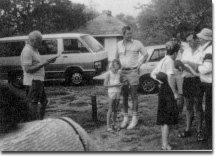
List of participants:
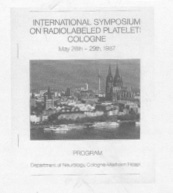
List of Participants:
5th Meeting Vienna 1989:
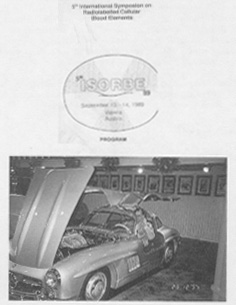
List of participants:
N. Arimizu, Chiba, Japan; Ch. Auinger, Vienna, Austria. P.N. Badenhorst, Bloemfontein, RSA; K Bakos, Praha, Czechoslovakia; W. Becker, Erlangen, Germany; R Beer, Marburg, Germany, P.C.L. Beverley, London, UK; P. Blauenstein, Villigen, Switzerland; F. Bock, Vienna, Austria: M. Bock, Manchester, UK; A. Bockisch, Bonn, Germany; H. Brenner, Vienna, Austria; M. Chianelli, Rome, Italy; P. Chiba, Vienna, Austria; B. Collet, Rennes, France; M. DeRoo, Leuven, Belgium; M.K Dewanjee, Miami, USA; D. Dodig, Zagreb, Yugoslavia; M.D. Ezekowitz, New Haven, USA; RA. Fawwaz, New York, USA; T. Feichtenschlager, Vienna, Austria; P. Fitscha, Vienna, Austria; J. Fortynova, Praha, Czechoslovakia; J. Hancevic, Zagreb, Yugoslavia; M.R. Hardeman, Amsterdam, NL; P.H. Hasler, ViUigen, Switzerland; A.duP. Heyns, Bloemfontein, RSA; D.B. Hocken, London, U.IC; R Hofer, Vienna, Austria; H. Hoffken, Marburg, Germany; K. Itoh, Sapporo Japan; D. Ivancevic, Zagreb, Yugoslavia; H. Jackson, Manchester, UK; J. Johansen, Odense, Denmark; K Joseph, Marburg, Germany; C. Kessler, Lübeck, Germany; G. Kleinpeter, Vienna, Austria; Ch. Kolbl, Vienna, Austria; K.F. Kotze, Bloemfoatein, RSA; A. Kroiss, Vienna, Austria; K. Lange, Marburg, Germany; J. Lecloirec, Rennes, France; N. Colas Linhart, Paris, France; M. Livakovic, Zagreb, Yugoslavia; J.T. Locher, Aarau, Switzerland; F. Lomena, Barcelona, Spain; O. Loreal, Rennes, France; G. Lupattelli, Perugia, Italy; J. Marienhagen, Erlangen, Germany; J. Martin-Comin, Barcelona, Spain; F. Mata, Palma de Mallorca, Spain; J.G. McAfee, Washington, USA; C.N. McCollum, London, UK; A. Moisan, Rennes, France; L. Mortelmans, Leuven, Belgium; Ch. Müller, Vienna, Austria; I. Novak-Hofer, Villigen, Switzerland; P. Oehr, Bonn, Germany; Z.K. Oster, Stony Brook, USA; G. Perneczky, Vienna, Austria; H. Pieters, Bloemfontein, RSA; B.S. Poulsen, Odense, Denmark; B. Pramsohler, Villach, Austria; F. Rauscha, Vienna, Austria; M. Roca, Barcelona, Spain; K.G. Schmidt, Odense, Denmark; K. Scholz, Villach, Austria; P.A. Schubiger, Villigen, Switzerland; A. Schwarz, Frankfurt, Germany; K.L. Sharma, Maachester, UK; A. Signore, Rome, Italy; K Sinzinger, Vienna, Austria; Eva Strobl-Jäger, Vienna, Austria; J. Stuyck, Leuven, Belgium; M.L. Thakur, Philadelphia, USA; L. Toujas, Rennes, France; J.K. Turner, Fremantle, Australia; K. Uno, Chiba, Japan; Irene Virgolini, Vienna, Austria; M. Vopatova, Praha, Czechoslovakia; G. Weidlich, Vienna, Austria; V. Weiler, Vienna, Austria; K. Weiss, Vienna, Austria; P. Winter, Bonn, Germany.
6th Meeting Barcelona 1992:
The symposium in Barcelona, the best and largest one up to this time, organized by Jose Martin-Comin and his coworkers in November 1992, was attended by about 130 investigators from 20 different countries (among them 14 European countries). A total of 87 research papers were presented (General 6, Peptides 1, Platelets 22, Leucocytes 29, Erythrocytes 2, Monoclonal Antibodies 12, IgG 8, others 7) and ample time was provided for after session and round table discussions. Overall, it was clearly evident that the merger of new technologies has presaged an exciting period in the field of diagnostic imaging with radiolabeled blood components. The whole meeting, including the social events, such as the trip to the Codorniu sparkling wine cellar in the mountains and the wonderful mediterranean atmosphere and pleasant sunny climate of Barcelona have been very well accepted by the participants. The dinner for the Board of Directors in the restaurant Set Portes at the port was an endless atherogenic journey through the Catalan cuisine.
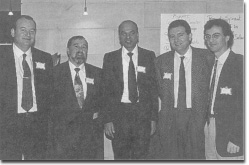
V. Alvarez, Princeton, USA; P. Angelberger, Vienna, Austria; P. Badenhorst, Bloemfontem, RSA; M.T. Bajen Lazaro, Barcelona, Spain; J. Banzo Marraco, Zaragoza, Spain; A. Baroli, Novara, Italy; P. Bass, Barcelona, Spain; A. Bastos-Lima, Porto, Potugal; W. Becker, Erlangen, Germany; P. Bernard, Marseille, France; M. Bernardo- Filho, Rio de Janeiro, Brazil; M.H. de Bois, Leiden, NL; J. Buscombe, London, UK; J. Caix, Bordeaux, France; I. Carrio, Barcelona, Spain; F. Casals, Barcelona, Spain; M. Castell Fabrega, Barcelona, Spain; A. Catafau, Barcelona, Spain; M. Chianelli, London, UK; F. Corstens, Nijmegen, NL; M.I. Cotta Cardoso, Porto, Portugal; D.J. Coughin, Princeton, USA; I. Couret, Montpellier, France; C. de Labriolle-Vaylet, Paris, France; M. de Sequera Rahola, Sta. Cruz de Tenerife, Spain; R. Dean, Londonderry, USA; M.K. Dewanjee, Miami, USA; F.M. Domenech Tome, Barcelona, Spam; M.D. Ezekowitz, New Haven, USA; M.R. Fernandez Espina, Barcelona, Spain; F. Güngör, Izmir, Turkey; A.M. Forster, Bucks, UK; J. Fortunato, Porto, Portugal; M. Fraile Lopez-Amor, Barcelona, Spain; A. Furno, Bologna, Italy; A. Garcia, Barcelona, Spain; A. Garcia Burillo, Barcelona, Spain; J.R. Garcia Garzon, Barcelona, Spain; J.M. Gonzalez, Baroelona, Spain; D.A. Goodwin, Palo Alto, USA; J.L. Gordon, Oxford, UK; Susanne Granegger, Vienna, Austria; R. Herranz, Barcelona, Spain; M. Huguet Panella, Barcelona, Spain; V. Ivanceviv, Göttingen, Gemany; B. Jansson, Huddinge, Sweden; Daya K. Hazra, Agra, India; R. Kinne, Erlangen, Germany; K.F. Kotze, Bloemfontein, RSA; A. Kroiss, Vienna, Austria; G. Landonio, Milano, Italy; D. Lasa, Madrid, Spain; J. Locher, Aarau, Switzerland; F. Lomena Caballero, Barcelona, Spain; J. Looman, Petten, NL; K. Louwes, Groningen, NL; L. Lusiani, Castelfranco, Italy; L. Mairal Padro, Barcelona, Spam; M.J. Marek, Albuquerque, USA; J. Martin-Comin, Barcelona, Spain; M.L. Martinez Pueyo, Madrid, Spain; F. Mata, Palma de Mallorca, Spain; M. Minoves Pont, Barcelona, Spain; A. Moisan, Rennes, France; J. Mora Salvado, Barcelona, Spain; M. Moragas, Barcelona, Spain; L. Mortelmans, Malvern, USA; M.A. Muxi, Barcelona, Spain; J. Pavia, Barcelona, Spain; A.M. Peters, London, UK; C. Piera, Barcelona, Spain; F. Pons, Barcelona, Spain; N. Prandini, Ferrara, Italy; M.L. Prat Elias, Barcelona, Spain; E. Prats Rivera, Zaragoza, Spain; L. Ramirez, Barcelona, Spain; M. Ramos, Barcelona, Spain; M. Ramos Marquez, Barcelona, Spain; Y. Ricart, Barcelona, Spain; E. Riera, Barcelona, Spain; M. Roca, Barcelona, Spain; G.M. Sacchetti, Novara, Italy; M. Sala Suarez, Barcelona, Spain; C. Sampson, Cambridge, UK; T. Schaible, Malvern, USA; G.R. Schinella, La Plata, Argentina; K.G. Schmidt, Odense, Denmark; M.I. Segarra Merino, Barcelona, Spain; J. Setoain, Barcelona, Spain; F.J. Setoam Perego, Barcelona, Spain; K. Seybold, Aarau, Switzerland; A. Signore, Rome, Italy; H. Sinzinger, Vienna, Austria; S. Solanski, Cambridge, UK; B. Soriano Borras, Barcelona, Spain; F. Spinelli, Milano, Italy; S.C. Srivastava, New York, USA; M.A. Sweetlove, Bloemfontein, RSA; M.L. Thakur, Philadelphia, USA; G. Torres, Barcelona, Spain; K. Uno, Chiba, Japan; C. Van Neron, Leuven, Belgium; Irene Virgolini, Vienna, Austria; I.M. Wedebye, Tommerup, Denmark; R .Weiner, Farmington, USA
7th Meeting New Haven 1995:
After some economic difliculties at the beginningof the organizing work for the 7th Symposium of the ISORBE, Michael D. Ezekowitz has been very successful and the participants joined a very interesting meeting again. As a matter of fact, the number of American participants was quite high, on the other hand the one of Europeans rather low. It has been a pleasure to visit the old historical buildings at the Yale University campus and for some of the participants it has been the first time to get a look on a PET imaging center.

A street festival with lots of music and special food and last but not least the Volvo tennis tournament, where Mike was able to organize tickets for the participants of the symposium, were enjoyable social events. Plenty of sun and warm summer weather were accompanying the entire conference. For many of us it has been the first time to attend ATP-tennis at the center court, especially to see quarter- and semi-finals – with top-players as Boris Becker, Sergi Bruguera and Mats Wilander – of such an important tournament, which finally Andre Agassi won.
List of participants:
J. Arrighi, New Haven, USA; J. Banzo, Zaragoza, Spain; J. Barrett, N. Billerica, USA; M. Bernardo Filho, Rio de Janeiro, Brazil; T. Biscotti, Chatsworth, USA; J. Buscombe, London, UK; L. Coetzee, Bloemfontein, RSA; P.D. Crane, N. Billerica, USA; A. Crocker, N. Billerica, USA; E. Daher, New Haven, USA; D. Damphousse, N. Billerica, USA; P.A. de Lima, Rio de Janeiro, Brazil; M.K. Dewanjee, Miami, USA; H. Dey, New Haven, USA; K Eissler, Copiague, USA; M.R Fernandez Espina, Barcelona, Spain; M. D. Ezekowitz, New Haven, USA; A.M. Forster, Buckinghamshire, UK; R.S. Freitas, Rio de Janeiro, Brazil; A. Furno, Bologna, Italy; J. Glajeh, N. Billerica, USA; Susanne Granegger, Vienna, Austria; B. Gutfilen, Rio de Janeiro, Brazil; O. Hatano, Chiba, Japan; S. Hemingway, N. Billerica, USA; G. Karanikas, Vienna, Austria; J. Kuyama, Chiba, Japan; B.R. Line, Albany, USA; J. Lister-James, Londonderry, USA; J.T. Locher, Aarau, Switzerland; H. Louwes, Groningen, NL; J. Martin-Comin, Barcelona, Spain; J. McAfee, Rochester, USA; R.C. Mease, Washington, USA; A. Moisan, Rennes, France; G.J. Morrissey, London, Canada; B. Mosing, Vienna, Austria; B.R. Moyer, Londonderry, USA; K. Özker, Milwaukee, USA; H. Pieters, Bloemfontem, RSA; N. Prandini, Ferrara, Italy; T. Prangere, Lille, France; E. Prats, Zaragoza, Spain; T. Rees, Chatsworth, USA; M. Roca, Barcelona, Spain; E.K. Rocha, Rio de Janeiro, Brazil; Margarida Rodrigues, Vienna, Austria; C. Sampson, Cambridge, UK; A. Signore, Rome, Italy; H. Sinzinger, Vienna, Austria; Victoria E. Soroa, Buenos Aires, Argentina; S.C. Srivastava, Upton, USA; M.L. Thakur, Philadelphia, USA; K. Uno, Chiba, Japan; B.l. Zaret, New Haven, USA

The organising committee wisely took the view that nuclear medicine should be inter-related with other medical specialities, so there were a number of clinical medical societies involved in the organisation, and the different working sessions benefited from the participation of clinical, physiological, pathological and immunological experts.
The Congress began with a symposium on the pathogenesis, diagnosis and treatment of atherosclerosis, given by Professors R. Ross, V. Fuster, H. Sinzinger and A. Corsini. During this symposium the most recent advances in the cellular and molecular bases of the condition, its pathogenesis and pharmacological control were discussed, as well as the role of nuclear medicine in this field. In the study of infection/inflammation special emphasis was given to research of new radiopharmaceuticals based on a better understanding of the pathophysiology of the inflammation, such as the studies carried out with cytokines and endothelial activation molecules.
In addition to the extensive scientific programme, those attending could also enjoy the wonderful countryside that surrounds the Villa Montecucco, especially Lake Albano, and make short visits to the Eternal City of Rome.
During the closing ceremony 4 prizes were awarded to the best presentations, with the winners being Doctors C. Van der Laken, E. Procaccini, S. Gratz and F. Jamar. In the choice of this pieces of research, devoted to cytokines labelling (interkeukin 1 and 2, endothelial activation molecules, anti-E selectin Fab) and new fragments of anti-granulocyte antibody, recognition was given to the search for future alternatives to conventional cell labeling techniques.List of participants:
Alexander E., UK; Alonso-Farto J.C., Spain; Mrs. Alonso-Farto, Spain; Andreani D., Italy; Annovazzi A., Italy; Arca M., Italy; Archimandritis S.C., Greece; Arnold A., USA; Askienazy S., France; Askienazy M., France; Balink H., Holland; Barat J.L., France; Barone R., Rome; Barzin P.J., The Netherlands; Becker W., Germany; Behamdouni M., Canada; Bertrand-Barat J., France; Blower P.J., UK; Boccaletto F., Italy; Bowden A., UK; Buchmann M., Norway; Burroni L., Italy; Buscombe J.R., UK; Cangi, Italy; Castelli, Italy; Castorina L., Italy; Centi-Colella A., Italy; Cornaglia G., Italy; Chianelli M., Italy; Corsini A., Italy; Corstens F.H.M., The Netherlands; Crane P.D., USA; De Antoni M.G., Italy; D’Errico G., Italy; Ellis B., UK; Ezekowitz M., USA; Farrar G., UK; Fazio F., Italy; Fernandez Espina M.R., Spain; Forster A., UK; Furno A., Italy; Fuster V.; Galli G., Italy; Garganefe M.C.; Garron J.Y., France; Giacalone P.,Italy; Goldenberg D., USA; Granegger S., Austria; Grassi A.M., Italy; Gratz S., Germany; Gunasekera R., UK; GÜngor F., Turkey; Hauser W., Canada; Hoschl R., Australia; Hung J.C., USA; Iurilli A.P., Italy; Jamar F., Belgium; Jones J.M., UK; Kalauz M., Croatia; Karanikas G., Austria; Karonen S-L, Finland; Klem J.A., USA; Kotze H.F., South Africa; Lazzeri E., Italy; Leaver J.P., UK; Lee K.B., Korea; Leimer M., Austria; Liberatore M., Italy; Locher J., Switzerland; Maggi E., Italy, Martin-Comin J., Spain; Mather S.J., UK; Maurea S.,Italy; Maussier M.L., Italy; McAfee J., USA; Medina M., Italy; Mire-Sluis A., USA; Moisan A., France; Monton C., Spain; Moyer B.R., USA; Nardi G., Italy; Neumann I., Austria; Nielson J.T., Denmark; Ombresi D., Italy; Orlando P., Italy; Orlando V., Italy; Ormstead H.G., Norway; Overmyer T.A., UK; Oyen W.J.G, The Netherlands; Paganelli G., Italy; Pallone F., Italy; Parisella M.G., Italy; Pauwels E.K.J., The Netherlands; Pearce J.H., UK; Piffanelli A., Italy; Ponza F., Italy; Poropat M., Croatia; Poti C., Italy; Pozzilli P., Italy; Prandini N., Italy; Prangere T., France; Prats E., Spain; Procaccini E., Italy; Prosperi D., Italy; Rademacher T.W., UK; Roca M., Spain; Rodrigues M., Austria; Ronga G., Italy; Ross R.; Rouma G., Belgium; Sampson C., UK; Serra F., Italy; Squame F., Italy; Shapiro B., USA; Sharma H.L., UK; Sinzinger H., Austria; Sobal G., Austria; Soroa V.E., Argentina; Signore A., Italy; Spagnoli L., Italy; St Martin S., Canada; StrÖmberg S., Finland; Szasz, I., Canada; Thakur M.L., USA; Van Beers D., Belgium; Van der Laken C.J., The Netherlands; Van Haelst J.P., Belgium; van Wyk V., South Africa; Varraso Italy; Varoglu E., Turkey; Vaylet C., France; Ventroni G., Italy; Violi F., Italy; Wiseman G., USA; Zsinka L., Hungary.
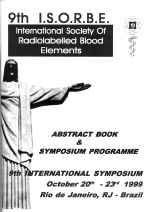
- Synthesis, biodistribution and dosimetry studies of 123I-labelled annexin V in mice: a potential SPECT-ligand for visualisation of apoptotic cells. C. Lahorte, F. Dumont, G. Slegers, C. Van de Wiele, R.A. Dierckx from University of Gent, Belgium.
- Labelling of ceftizoxime with 99mTc. V. Gomes-Barreto, F. Iglesias, M. Roca, F. Tubau, J. Martin-Comin a collaboration between Spain and Brazil.
- Tc-99m HMPAO white blood cell scintigraphy in acute appendicitis patients with equivocal clinical presentation. F. Gungor, S. Ozugur, T. Colak, H. Bozan, A. Yildiz from Akdeniz University, Turkey.
- Labelling of the anti-elastin monoclonal antibody with technetium-99m using 2-iminothiolane. M.B.N. Oliveira, C.R. Silva, A.C. Braga, A. Caldeira-de-Araujo, M. Bernardo-Filho from University of Rio de Janeiro, Brazil.
Symposium Participants:
Prangere Thierry, Sirkka-Liisa Karonen, Kairemo Kalevi, Veiga Jorge, Lasa Perez Dionisio, Granegger Susanne, Tomas Maria, Cavalcante Carlos, Locher Johannes, Palestro Christopher, Sobal Grazyna, Ramos Farias Moreno Silvana, Linkowski Faintuch Bluma, Dantas Flavio, Zabala Prisila, Capriles V.S., Prandini Napoleone, Moisan Annick, Ozker Kutlan, Firat Gungor Ahmet, Baptista Santos Marco Aurelio, de Oliveira Chavez Erika Cristina, Hiller Bondarczuck Marli, Lahorte Christophe, Sciavom Duarte Paulo, Moraes Rogerio, Barat Bertrand, Frier Malcolm, Ertay Turkan, Diniz Simone, Leite Bruno, Franca de Mendonca Elitom, de Oliveira Aguiar Ronaldo, Dere Feliciano Glaucio, Burroni Luca, Gunasekera R., de Labriolle-Vaylet Claire, Ripoll Hamer Erica, Alonso-Farto Juan Carlos, Carneiro Michel, Nigri Flavio, Ferreira da Costa Rosario, Souza O. Jose Eduardo, de Souza Maciel Oduwaldo, Forstrom Lee, Serafim R. Bernardo, Camargo Bernardo Luciana, Varraso Antonio, Prats Enrique, Cardoso de Souza Conceicao Rejane, Braga A.C.S., Avila A.S., Caldeira de Araujo Adriano, Signore Alberto, Buchpiguel Carlos Alberto, Ribeiro da Silva Claudia, Pagano G. da Silva Constancia, Pearson Daniel, Tabak Daniel, Machado do Mattos Deise Mara, Regio Moraes Edison, Boasquevisque Edson, Kotlyarov Eduard, Garcia Eloy J., Verdera Presto Emilia Silvia, Braga Francisco, Sinzinger Helmut, Oliveira Joelma F., Buscombe John R., Martin-Comin Jose, Oliva Gonzales Juan P., Britton Keith E., Seifert Katherine L., Oliveira Marcia B.N., Younes Ibrahim M., Roca Engronat Manuel, Rodrigues Margarida, Exposito Penas Maria, Gomes Maria Luiza, Bernardo Filho Mario, Thakur Mathew L., Stabin Michael, Boerman Otto C., Gonzales Espinoza Patricio Orlando Jose, Baum Richard, Levy Cavalcanti Jales Roberto, de Souza Freitas Rosemeire, Das Satya S., Cardoso Albert N., Soroa Victoria Ester, Oyen Wim J.G., Rodrigues Motta Anna Paula, Aleixo Luis Claudio, Bastos Miguel Angelo, Braghiroli Ana Maria, Laufer Gustavo, Pecanha Muzy Dias Aline, Moreira Monamaldo Costa Thadeu Estevam, Figueiredo Soares Scheila, Figueiredo de Melo Suzana, Masioli Marco Antonio, dos Santos Lins Gean Bernardo Xavier, Salehi Nouria, Theodoro Boullosa Lidia, Roberto Avila C. Bezerra Jose, Ribeiro Madke Rafael, Almeida Maria Janilde, Ferreira da Costa Rogerio, Shaskolsky I., Lazzeri Elena, Nilson Elisa, Vivante Hugo A., Fonseca Souza Joseane, Paiva Proenca Martins Flavia, Nicolini Jorge Oswaldo, Manhaes de Souza Ricardo A., Miranda Jose R. A..
TIME-TABLE OF CONFERENCES
1st International Symposium on Radiolabeled Blood Cells.
September 1979, Yale
University School of Medicine, New York, USA.
Organization: M.L. Thakur, A. Gottschalk
Proceedings: In-111 labeled neutrophils, platelets and lymphocytes. Eds.: M.L. Thakur, A. Gottschalk, Trivirum Pub. Co., New York, 1980.
August 29 – September 9, 1982, Maratea, Italy, NATO ASI
Organization: M.L. Thakur, M.D. Ezekowitz, M.R. Hardeman
Proceedings: Radiolabeled cellular blood elements. Eds.: M.L. Thakur, M.R Hardeman, M.D. Ezekowitz. Plenum Pub. Co., New York, 1985
February 3 – 6, 1986, University of the Orange Free State, Bloemfontein, South Africa
Organization: A. du P. Heyns, P.N. Badenhorst, M.G. Lotter
Proceedings: Conference on radionuclide labeled cellular blood elements: Applications m Atherosclerosis and Thrombosis. Ed.: A. du P. Heyns. Publ.
South African Medical Research Council, Parow, 1986.
May 28 – 29, 1987, Hotel Mondial, Cologne, Germany
Organization: J.N. Petrovici, Ch. Kessler, G. Modder
Proceedings: Clinical Applications of Radiolabeled Platelets. Eds.: Ch. Kessler, M.R
Hardeman, K Hennmgsen, J.N. Petrovici. Kluwer Academic Publ., Dordrecht, NL, 1990.
September 10 – 14, 1989, Vienna, Austria
Foundation of the INTERNATIONAL SOCIETY OF RADIOLABELED BLOOD ELEMENTS (ISORBE)
First President: Mathew L. Thakur
Organizing Chairmen: H. Sinzinger and M.L. Thakur
Local Organization: P. Fitscha, Ch. Miiller, Eva Strobl-Jager, Irene Virgolini, V. Weiler
Abstracts: Nuclear Medicine Research Vol 3. RadiolabeRed Cellular Blood Elements. Eds.: KF. Sinzinger, M.L. Thakur.
Proceedings: Progress in Clinical and Biological Research. Vol. 355. Radiolabeled Cellular Blood Elements. Eds.: H. Sinzinger, M.L. Thakur.
Publ Wiley-Liss Inc. New York, 1990.
NATO Advanced Research Workshop. November 23 – 27, 1992, Barcelona, Spain
Second President: Helmut Sinzinger
Advisory Council: M.L. Thakur, J.G. McAfee, H. Sinzinger, J. Martin-Comin
Local Organization: J. Martin-Comin, M. Roca, C. Piera, F. Lomena
Proceedings: Radiolabeled Blood Elements. Recent advances in techniques and applications.
Eds.: J. Martin-Comin, M.L. Thakur, C. Piera, M. Roca, F. Lomena. NATO ASI series vol. 262, Plenum Press, New York, 1994.
August 20, 1994, Düsseldorf; Germany
Organization: H. Sinzinger
August 16 – 19, 1995, Yale University, New Haven, USA
Third President: Jose Martin-Comin
Honorary President: John G. McAfee
Course Director: M.D. Ezekowitz
Local Organization: M.D. Ezekowitz, J. Arrighi, Holley Dey, R Soufer, B.L. Zaret
Proceedings: Have not been published
September 14, 1996, Copenhagen, Denmark
Organization: A. Signore, M. Chianelli
May 24 – 27, 1997, Rome, Italy
Organizing President: A. Signore
Local Organization: M. Arca (Secretary), M. Chianelli, M. Liberatore, Maria L. Maussier, G. Paganelli, A. Piffanelli, P. Pozzilli, G. Ronga
Honorary Committee: D. Andreani, P. Biglioli, P. Bianchi, G. Camuzzini, A. Centi Colella, G. Faglia, F. Fazio, G. Galli, M. Gandolfi, G. Ricci
Scientific Committee: S. Askienazy, W. Becker, F. Corstens, M. Ezekowitz, J. Martin-Comin, S.J. Mather, A. Piffanelli, H. Sinzinger, S. Srivastava, M.L. Thakur, F. Violi
Abstracts: Nuclear Medicine Communications
Proceedings: Not decided at time of printing
9th International Symposium on Radiolabeled Blood Elements.
October 20-23, 1999 Universidade do Estado do Rio de Janeiro, Campus Rua São Francisco Xavier, 524 Rio de Janeiro, RJ, Brazil
Organizing President: M. Bernardo-Filho
Coordinator: E. Mendes Boasquevisque
Organizing Committee: M. Chianelli, P. Gonzales, M. Frier, Margarida Rodrigues, Victoria E. Soroa, S. Verdera, S. Srivastava
Local Committee: A.M. Braghirolli, A.C. de Araújo, C. Buchpiguel, C.R. Silva, C. Pagano, J.E. Pereira, J.F. Oliveira, M.B. Oliveira, M. Exposito Penas, M. Albernaz,
M. Rebelo, R.J. Bezerra
Scientific Committee (International): W. Becker, J. Buscombe, J. Martin-Comin, A. Signore, H. Sinzinger, M. Thakur
Scientific Committee (Local): V.C. Nascimento, F. Braga, R.L. Jales, E.A. Araújo, M. Bernardo-Filho, E.M. Boasquevisque, M.A. Martins, C.A. Lacerda
Abstracts: Published in Nuclear Medicine Communication
BOARD OF ISORBE
1989 – 1992
President:
Mathew L. Thakur (Philadelphia, USA)
Secretary:
John G. McAfee(Washington, USA)
Treasurer:
Helmut Sinzinger (Vienna, Austria)
Executive Committee:
W. Becker (Erlangen, Germany), M.K Dewanjee (Miami, USA), M.E. Ezekowitz (New Haven, USA), D.A. Goodwin (Palo Alto, USA), M. Hardeman ( Amsterdam,
The Netherlands), A. du P. Heyns (Bloemfontein, South Africa), C. Kessler (Koln, Germany), P. Lavender (London, U.K.), J. Martin-Comin (Barcelona, Spain),
A.M. Peters (London, U.K.), K. Uno (Chiba, Japan)
1992 -1995
President:
Helmut Sinzinger (Vienna, Austria)
Immediate Past President:
Mathew L. Thakur (Philadelphia, USA)
Secretary:
Michael D. Ezekowitz (New Haven, USA)
Treasurer:
Jose Martin-Comin (Barcelona, Spain)
Board of Directors:
P.N. Badenhorst (Bloemfontein, South Africa), R. Baum (Frankfurt, Germany),W. Becker (Göttingen, Germany), F. Corstens (Nijmegen, The Netherlands), M. K. Dewanjee (Miami, USA), A. Driedger (London, Canada), M.C. Gil (Santiago, Chile), D.A. Goodwin (Palo Alto, USA), M. Hardeman (Amsterdam, The Netherlands), Daya K. Hazra (Agra, India), A. du P. Heyns (Bloemfontein, South Africa), R.M. Lambrecht (Sidney, Australia), J.P. Lavender (London, U.K), J.T. Locher (Aarau, Switzerland), F. Lomena (Barcelona, Spain), J.G. McAfee (Bethesda, USA), A. Moisan (Rennes, France), A.M. Peters (London, U.K.), A. Signore (Rome, Italy), K. Uno (Chiba, Japan)
1995-1997
President:
Jose Martin-Comin (Barcelona, Spain)
Honorary President:
John McAfee (Bethesda, USA)
Immediate Past President:
Helmut Sinzinger (Vienna, Austria)
Secretary:
Alberto Signore (Rome, Italy)
Treasurer:
Wolfgang Becker (Göttingen, Germany)
Board of Directors:
P.N. Badenhorst (Bloemfontem, South Africa), M. Bernardo-Filho (Rio de Janeiro, Brazil), F. Corstens (Nijmegen, The Netherlands), M. K. Dewanjee (Miami, USA), M.D. Ezekowitz (New Haven, USA), Maria Cecilia Gil (Santiago, Chile), D.A. Goodwin Palo Alto, USA), Daya K. Hazra (Agra, India), R.M. Lambrecht (Sidney, Australia), J.T. Locher (Aarau, Switzerland), Annick Moisan (Rennes, France), A.M. Peters (London, U.K), E. Prats Rivera (Zaragoza, Spain), Margarida Rodrigues (Vienna, Austria), C.B. Sampson (Cambridge, U.K.), Victoria E. Soroa (Buenos Aires, Argentina), S.C. Srivastava (Upton, USA), K. Uno (Chiba, Japan)
President:
Wolfgang Becker (Göttingen, Germany)
Honorary President:
John McAfee (Bethesda, USA)
Immediate Past President:
Jose Martin-Comin (Barcelona, Spain)
Secretary:
John Buscombe (London, UK)
Treasurer:
Margarida Rodrigues (Vienna,Austria)
Board of Directors:
P.N. Badenhorst (Bloemfontein, South Africa), M.D. Ezekowitz (New Haven, USA), M.C. Gil (Santiago, Chile), C.B. Sampson (Cambridge, UK), K. Uno (Chiba, Japan), S.C. Srivastava (Upton, USA), Daya K. Hazra (Agra, India), M. Chianelli (Rome, Italy), F. Corstens (Nijmegen, NL), R.M. Lambrecht (Sidney, Australia), Victoria E. Soroa (Buenos Aires, Argentina), M.K. Dewanjee (Miami, USA), A. Moisan (Rennes, France), D.A. Goodwin (Palo Alto, USA), M.A. Peters (London, UK), M. Bernardo-Filho (Rio de Janeiro, Brazil), J.T. Locher (Aarau, Switzerland), E. Prats Rivera (Zaragoza, Spain)
President:
Alberto Signore (Rome, Italy)
Honorary President:
John McAfee (Bethesda, USA)
Immediate Past President:
Wolfgang Becker (Göttingen, Germany)
Secretary:
Enrique Prats Rivera (Zaragoza, Spain)
Treasurer:
Margarida Rodrigues (Vienna, Austria)
Board of Directors:
P.N. Badenhorst (Bloemfontein, South Africa), M. Bernardo-Filho (Rio de Janeiro, Brazil), J. Buscombe (London, UK), F. Corstens (Nijmegen, NL), M.K. Dewanjee (Miami, USA), M.D. Ezekowitz (New Haven, USA), M.C. Gil (Santiago, Chile), D.A. Goodwin (Palo Alto, USA), K. Azra (Agra, India), R.M. Lambrecht (Sidney, Australia), J.T. Locher (Aarau, Switzerland), A. Moisan (Rennes, France), W. Oyen (Nijmegen, The Netherlands), M.A. Peters (London, UK), V.E. Soroa (Buenos Aires, Argentina), S.C. Srivastava (Upton, USA), K. Uno (Chiba, Japan)
PAST PRESIDENTS
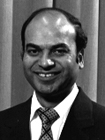
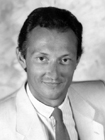
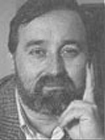
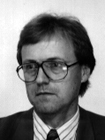
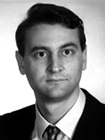
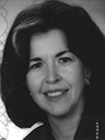
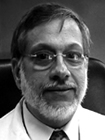
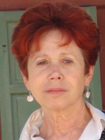
Obituaries
Wolfgang BECKER (1952 – 2002)

Wolfgang BECKER was born on September 7th, 1952 in Uffenheim, Bavaria, Germany. In 1971 he passed the “Abitur” (school-leaving examination) at Bad Windsheim and got the MD at the University of Würzburg in 1979. He worked shortly at the Department of Pathology and specialized in Nuclear Medicine from 1981 to 1985 at the Department of the University of Würzburg under Prof. W. Börner. The topic of his “Habilitation” (augural thesis) in 1987 was one of his key scientific interests (“111Indium-oxine labelling of white blood cells, potential of scintigraphic diagnosis in inflammatory diseases”).
In 1988 he became C3 Professor for Nuclear Medicine at the University of Erlangen, Nürnberg and in 1995 C4 Professor for Nuclear Medicine at the Georg August University of Göttingen, where he stayed until his death.
He became member of the Task Group on Continuous Education of the European Association of Nuclear Medicine (EANM) in 1991, another key interest in his life. This involvement finally led to the position of the Dean of the European School of Nuclear Medicine in 1995 and the Vice-presidency of the Union of the European Medical Specialists.
In 1997 he was elected president of ISORBE, the International Society on Radiolabeled Blood Elements. In ISORBE he had a lot of very close fiends sharing his interest on radiolabeling blood cells from the early beginning in the early 80ies.
In 1998 he was elected as president of the Union of the European Medical Specialists and in 1999 of EANM.
On May 18th, 2002 Wolfgang Becker died after a long and courageous battle against cancer.
He is survived by his wife Hedwig, they married 1978, and his two children Sabine (born 1980) and Sebastian (born 1982).
Wolfgang Becker was an excellent scientist, a great supporter of young researchers, a pioneer in education and above all an outstanding personal character, colleague and friend.
Johannes Theophil LOCHER (1938 – 2007)
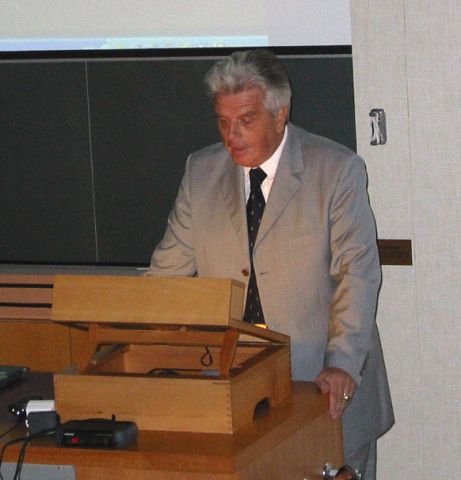
Johannes T. LOCHER was born on the 5th of March, 1938 in Schaffhausen, Switzerland. After finishing school with „Abitur“ in Basle in 1958 he studied medicine at the Universities of Geneva, Basle and Bern where he obtained his degree. Starting in internal medicine he discovered his interest for the young discipline of nuclear medicine by chance and obtained a position at the Department of Nuclear Medicine in Basle.
In 1974 he was the first in Switzerland to become Associate Professor (habilitation) for nuclear medicine. In the same year he was appointed Director of the Nuclear Medicine Department in Aarau giving him the opportunity to establish and form the institution from the early beginning. His very kind and friendly personality allowed among others a cooperation integration of nuclear medicine into the local medical structure. His long efforts to establish PET at this unit was achieved only shortly after his retirement (March 30th, 2003) which was celebrated on January 17th, 2003 at a national symposium.
Johannes Locher was the first president of the section of Nuclear Medicine of the Swiss Society for Radiology from 1979 to 1983. From 1998 to 1999 he was secretary and thereafter until 2003 the president of the Swiss Society for Nuclear Medicine.
Johannes Locher became closely related to the ISORBE family with his pioneer work being the first to use white blood cell antibody for diagnosis of infection. At the 5th ISORBE Meeting in Vienna 1989 he was already presenting his plentyful experience and from then on he was attending all the ISORBE Conferences including the last one in September 2005 in Villigen, Siwtzerland, which he organized and hosted (together with P. August Schubiger). From 1992 to 1997 Johannes Locher was a member of the Board of Directors of ISORBE.
One of his particular hobbies was to help to establish nuclear medicine in the formerly communistic countries mainly in Bulgaria. In particular he was proud when he succeeded in establishing an academy for radiological technicians in Varna, Bulgaria. These activities have been recognized by a honorary doctor degree at the University of Varna in 1999.
In 2001 he received the „Von Hevesy-medal“ from the Hungarian Society of Nuclear Medicine.
Johannes Locher was a kind, polite, benevolent person, intelligent and educated with wide interests. His knowledge and cultural education were enormous. It was a too rare pleasure to have dinner with him and touch a wide spectrum of ideas, interests and plans. He was well respected and he was always ready to listen to the people’s opinion. He was a critical scientist, a good listener, calm and helpful colleague and supportive friend. His enegery, ideas and plans for the time after retirement due to his multiple interests were large. It was a privilege to share science, projects and time with him.
ISORBE lost one of its closest family members, a long-lasting supporter and a good friend.
Helmut Sinzinger, Vienna in May 2007
in: ISORBE Newsletter. Radiolabelled Blood Elements 2007; Vol 13(No 1): 10-11
John Mc AFEE (1926 – 2008)
